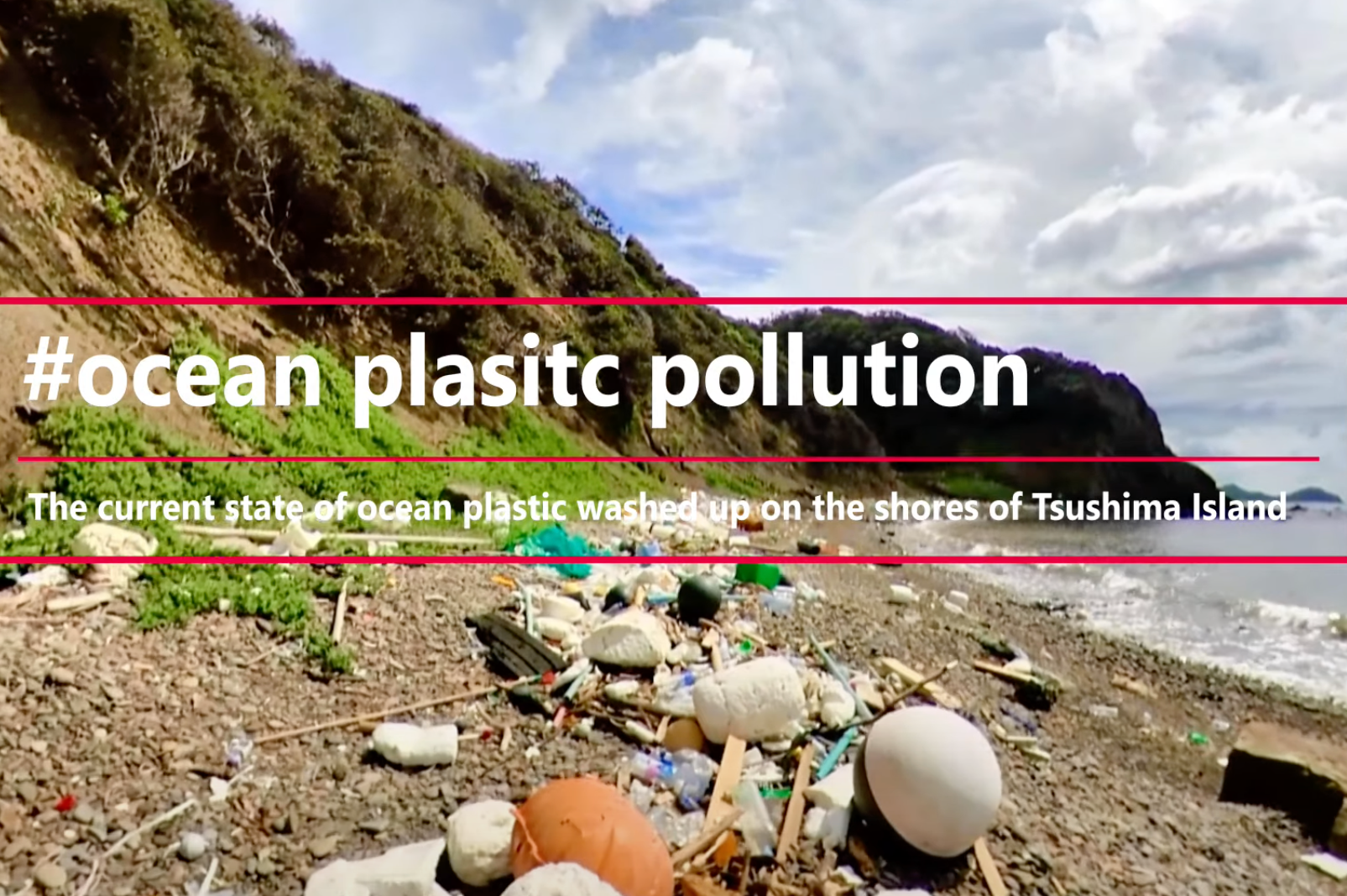
Tsushima Week, held from Monday, June 16th to Sunday, June 22nd, presented the current state of Tsushima City’s marine plastic pollution problem and the efforts of various organizations to address the issue. Located in an “international hotspot for marine debris,” Tsushima aims to realize a sustainable island by connecting with people, knowledge, technology, and goods from around the world through the 2025 Osaka-Kansai Expo. Before and after each lecture, an animation featuring “Otosha,” the god of the sea, the main character of Tsushima Week, and videos about activities taking place on Tsushima were screened, making this a week that focused on the future of the ocean, starting with Tsushima.
Japan-Korea Marine Environment Symposium
On Monday, June 16th, the start of Tsushima Week, a symposium was held to discuss the current state of marine debris in Japan and Korea and youth initiatives. Tsushima City Mayor Hitakatsu Naoki opened the event by expressing his gratitude for the opportunity to share Tsushima’s efforts with the world. Next, Jin Chang-soo, Consul General of the Republic of Korea in Osaka, took the stage as a guest representative and emphasized the importance of international cooperation in protecting the marine environment.
The first half of the symposium, moderated by Mikiko Kawaguchi, CEO of Blue Ocean Tsushima Co., Ltd., featured a talk session featuring Japanese and Korean researchers and Tsushima City officials on the theme of “The Current State of Marine Debris and Actions.” First, Toshiya Fukushima, Counselor and Assistant Director of Tsushima City’s Environmental Policy Division, explained why waste from Asia washes up on Tsushima, the costs of collection, and collection projects linked to tourism. Professor Choi Kyu-jeong of the Department of Environmental Engineering at Korea Maritime University’s College of Engineering spoke about the issue of microplastics and the dangers of plastic accumulation in the human body. The final speaker was Associate Professor Satoko Kiyono of the Department of Environmental Studies, Graduate School of Engineering, Kyushu University, who spoke about Tsushima’s history as a border island, where it has worked with neighboring countries to resolve issues, and about international activities.
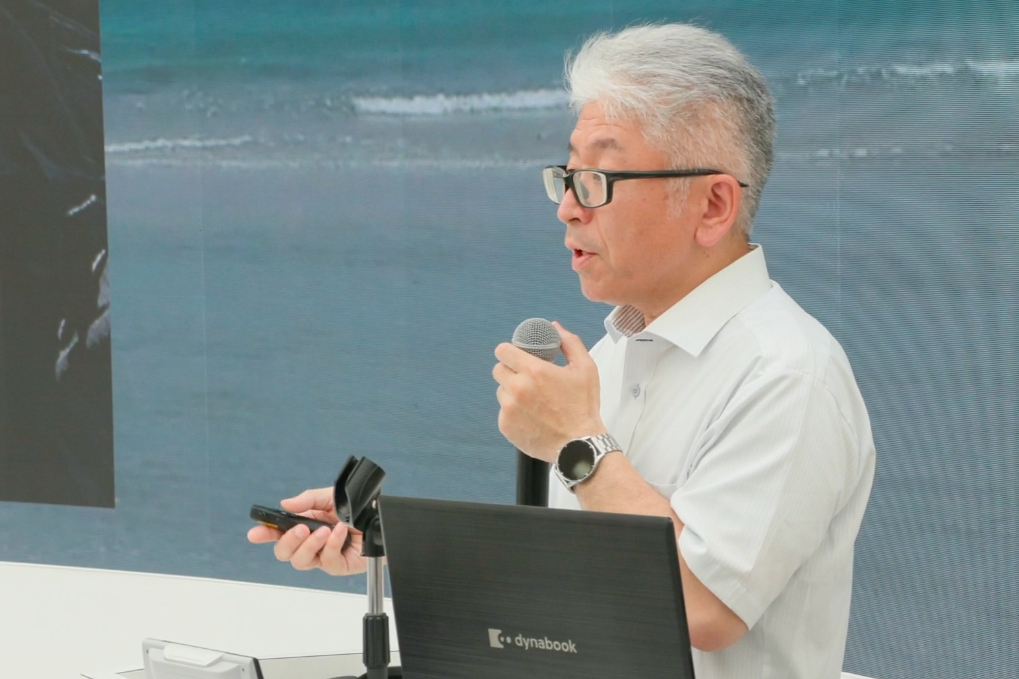
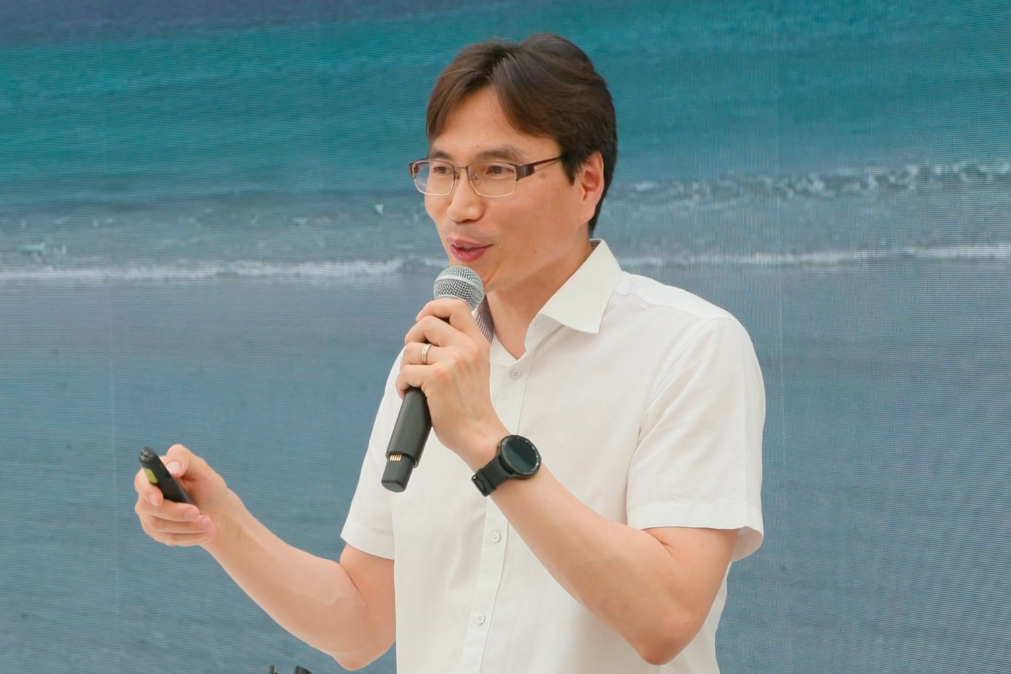
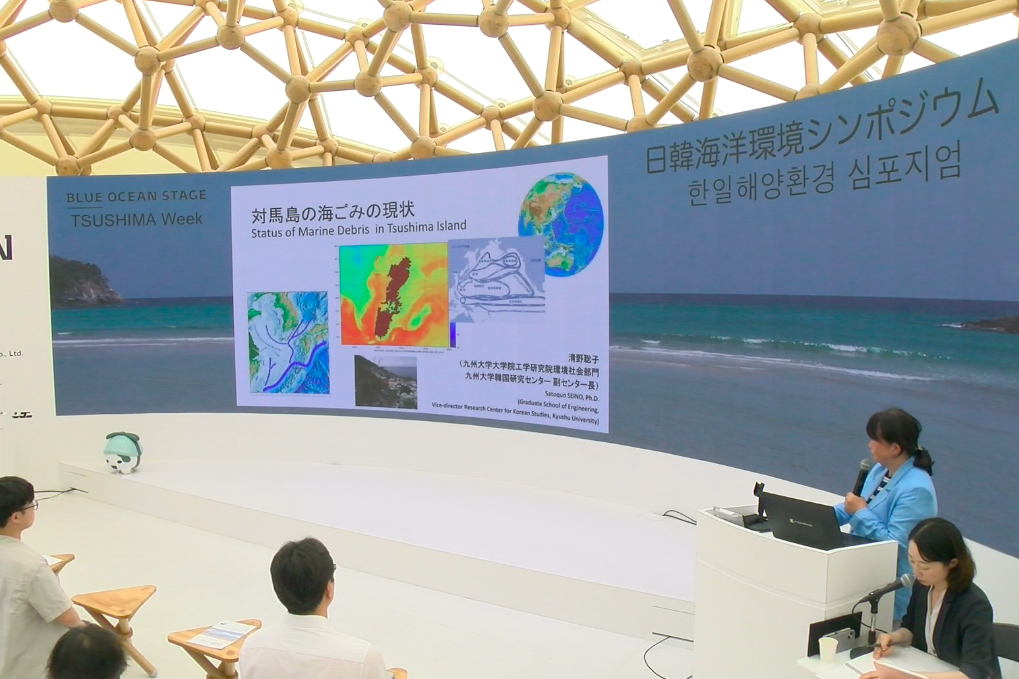
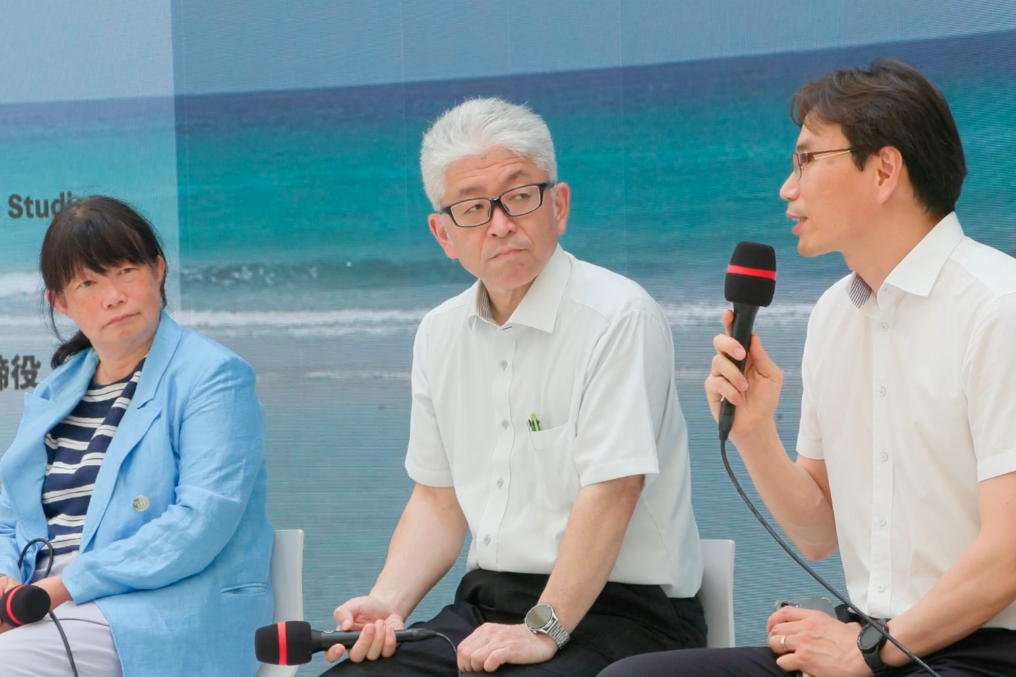
In the second half, moderator Yoshiki Ueno, Representative Director of Tsushima CAPPA, a series of presentations were given by Japanese and Korean students. First, Kazuki Komiya, Director of Tsushima City’s Environmental Policy Division, and Kiyono explained their research into washed-up trash and Japan-Korea exchanges through beach cleanups. Following this, Jang Jun-ho, a third-year student in the School of Integrated Japanese and Regional Studies at Hankuk University of Foreign Studies; Kazuhito Murohara, a fourth-year student in the Faculty of Agriculture at Kyushu University; and Yuriko Nagaoka, a fourth-year student in the Faculty of Law at Doshisha University who is active with the International Volunteer Student Association (IVUSA), presented their respective activities. Through this talk session, the three students spoke about the importance of cooperation across generations and borders.
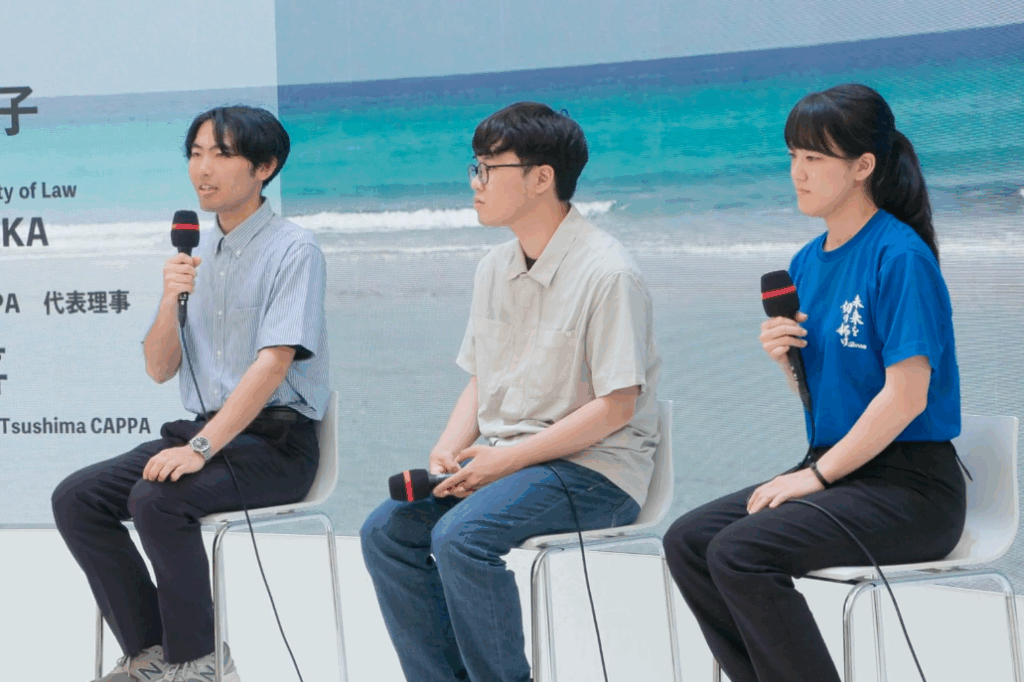
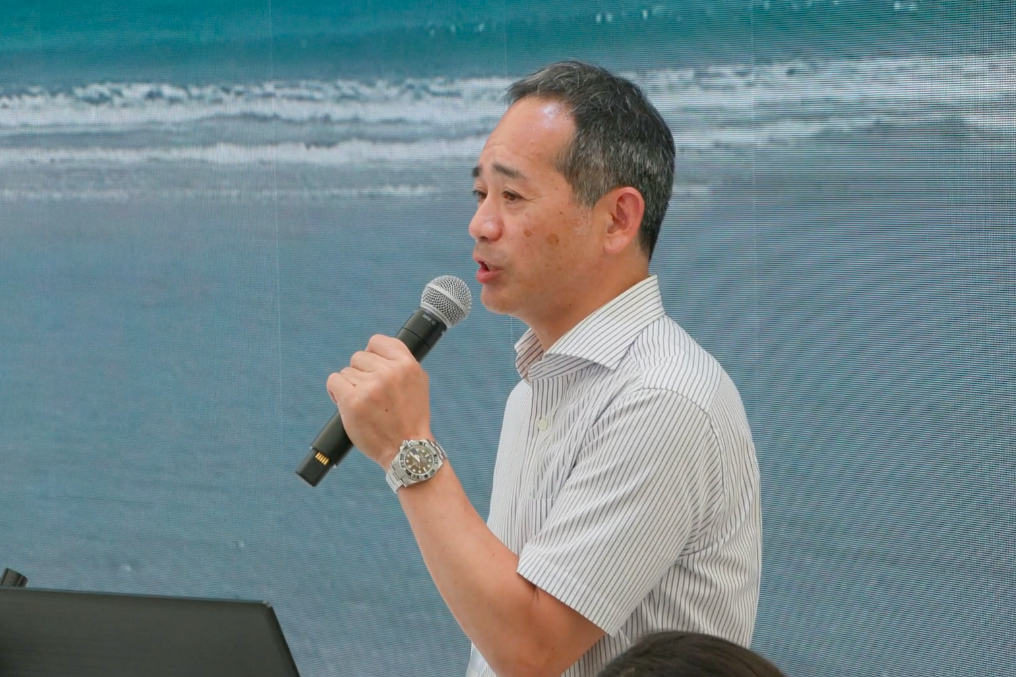
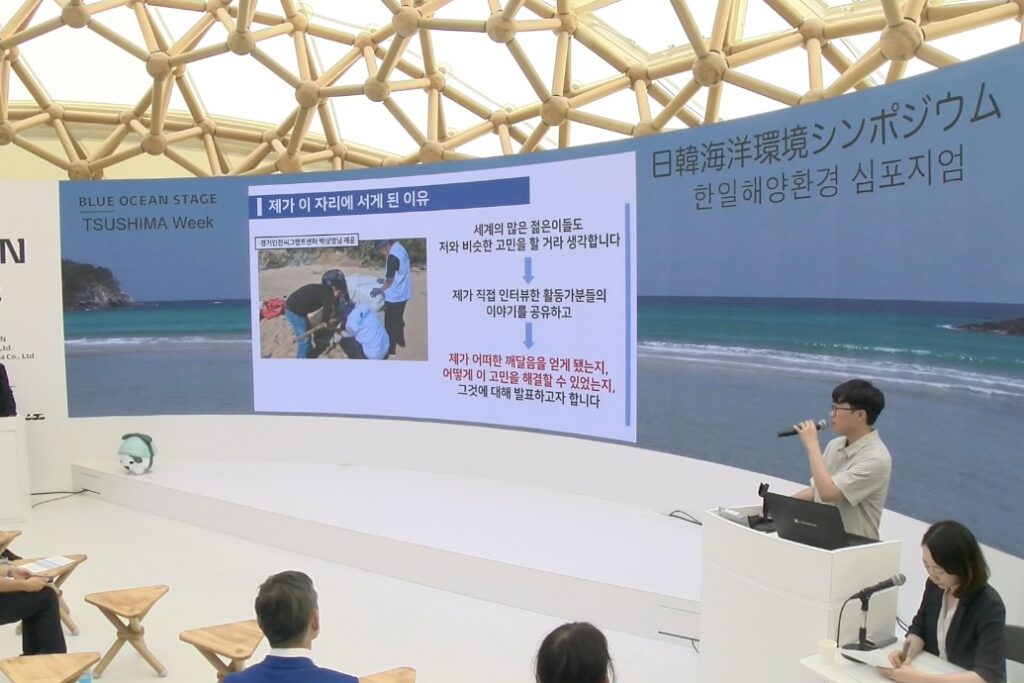
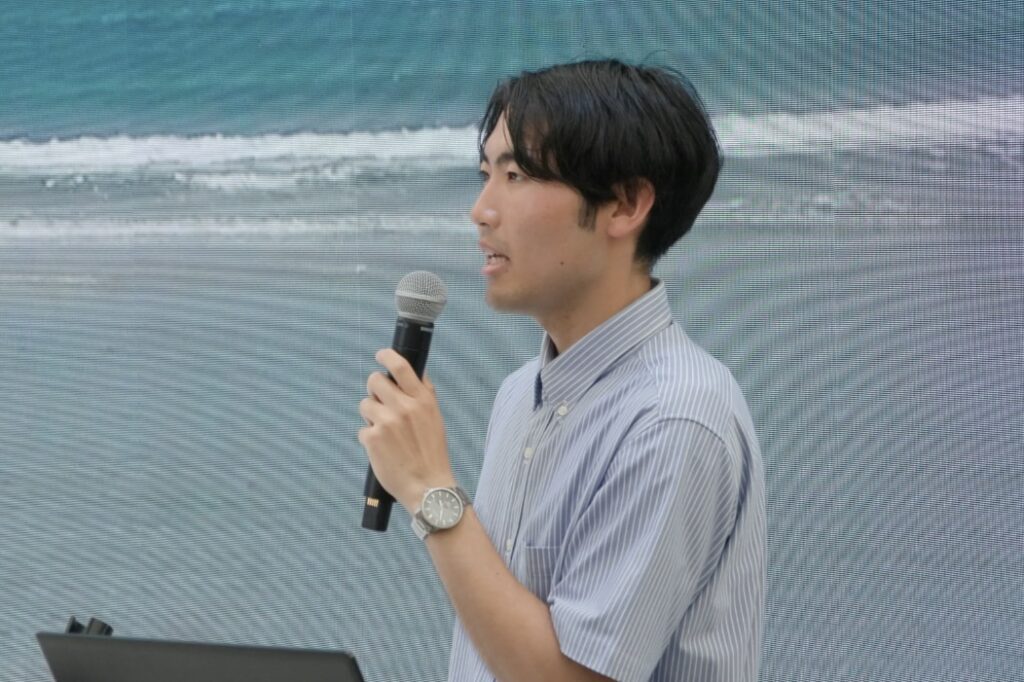
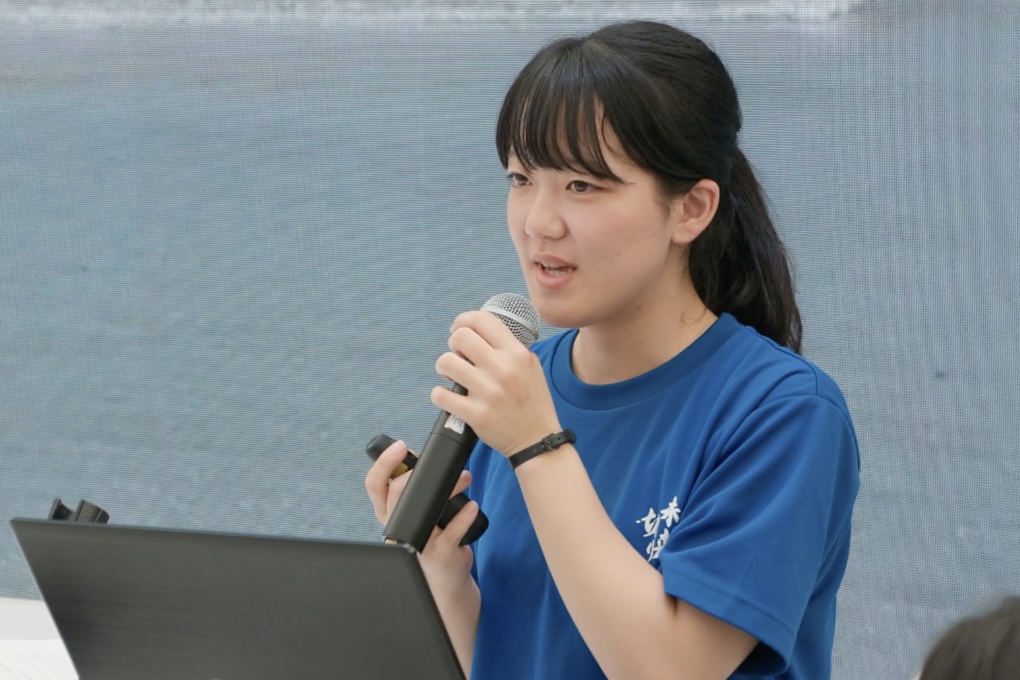
Japan-U.S. Marine Environment Symposium
On Tuesday, June 17, a talk session was held on the current state of marine debris in Japan and the U.S. and youth initiatives. The event began with opening remarks from Tsushima City Mayor Masaru Hidaka and Rob Forss, Consul for Political and Economic Affairs at the U.S. Consulate in Fukuoka.
The Japan-U.S. symposium was moderated by Associate Professor Kiyono of the Department of Environmental Society, Graduate School of Engineering, Kyushu University, and three speakers gave presentations on marine issues Japan and the U.S. are addressing. Michihisa Suenaga, Director of Tsushima CAPPA (General Incorporated Association), emphasized the importance of participants’ proactiveness and the exchange of ideas toward problem-solving, and spoke about passing on this activity to the next generation. Next, Marty Pomfrey, President of Patagonia International Japan, spoke about Patagonia’s project to recycle fishing nets and other materials into products. Finally, Yusuke Saraya, Chairman of ZERI JAPAN, shared his background and spoke about efforts to restore the richness of the ocean and the earth.
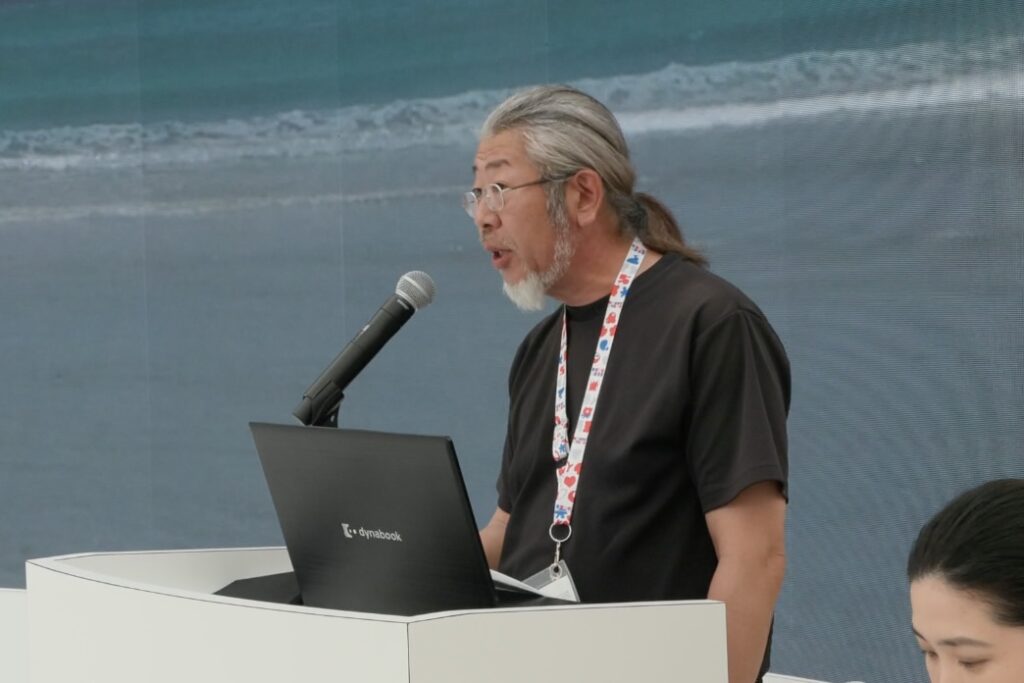
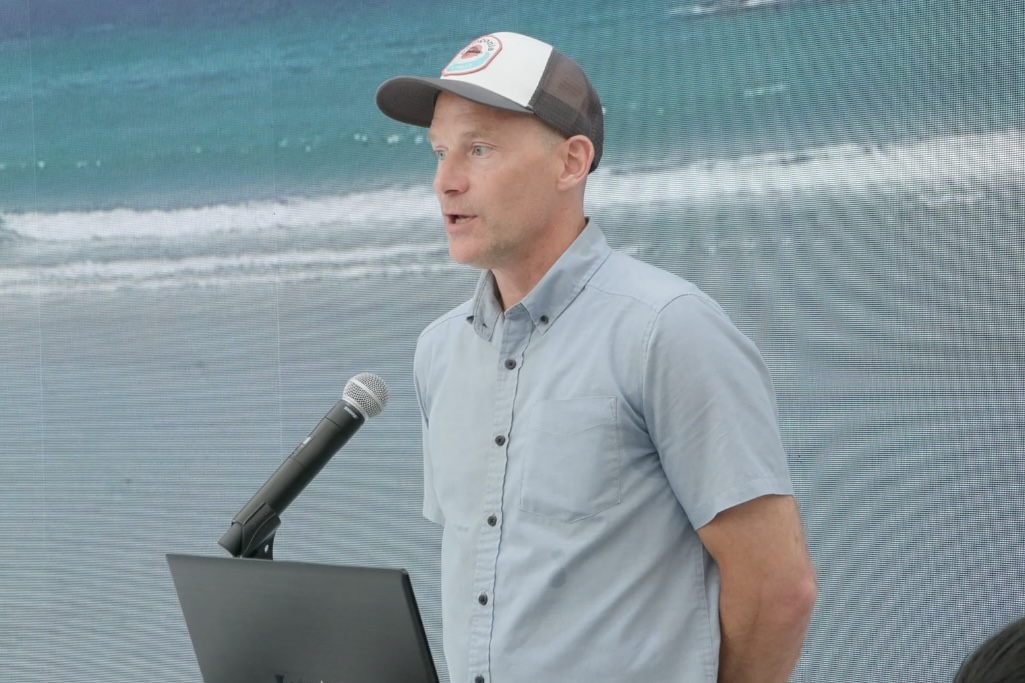
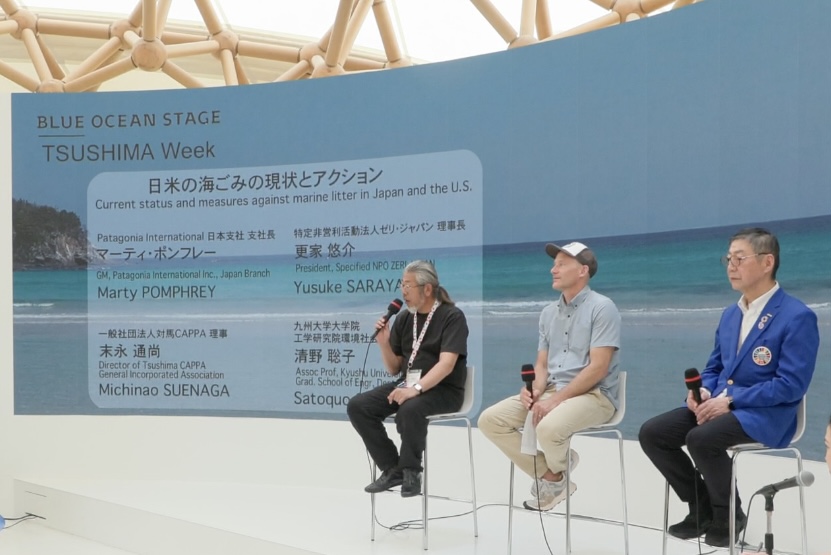
In the second half of the symposium, moderator Kawaguchi, CEO of Blue Ocean Tsushima Co., Ltd., presented presentations by Japanese and American students. During the talk session, Josh Nguyen of the Department of Computer Engineering at San Jose State University, Shinichiro Koga, a second-year master’s student at the Graduate School of Integrated Sciences for Global Society at Kyushu University, and Nagaoka of the International Volunteer Student Association (IVUSA), presented activity reports, highlighting the need to engage with a wide range of generations to solve problems.
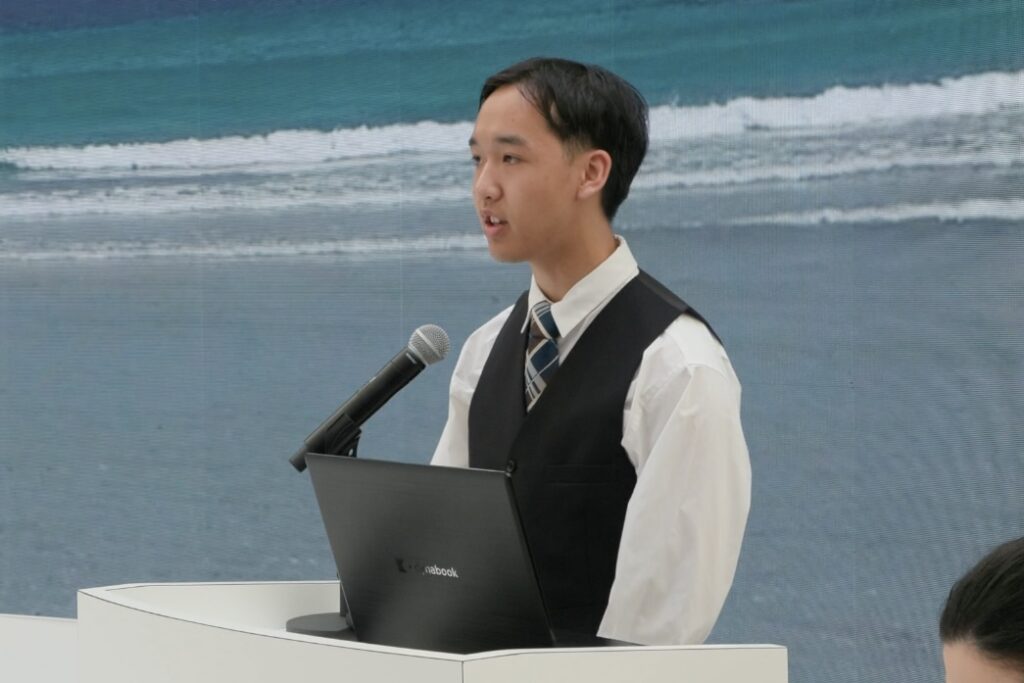
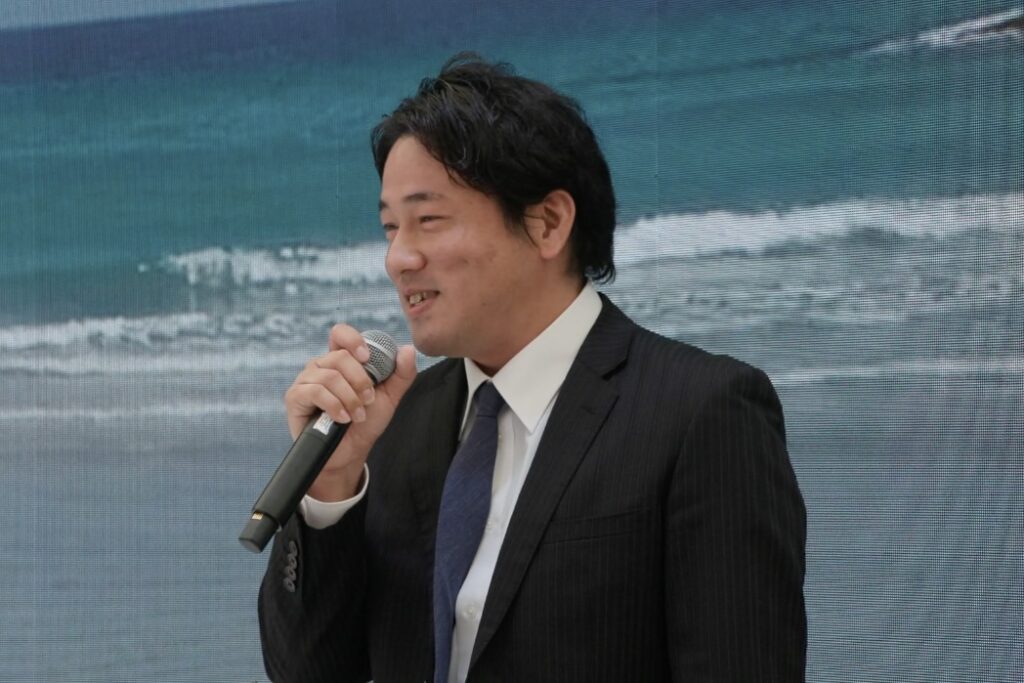
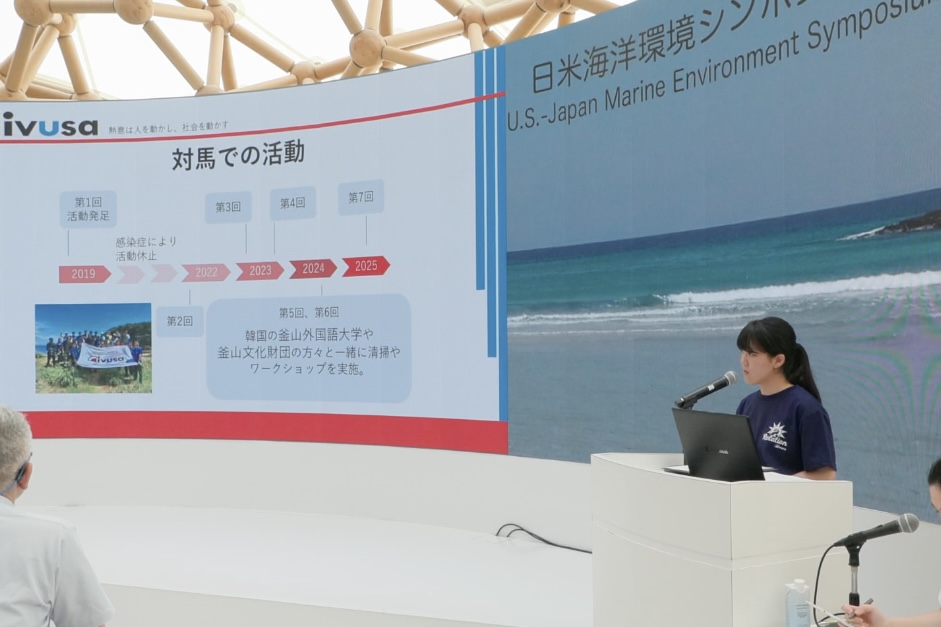
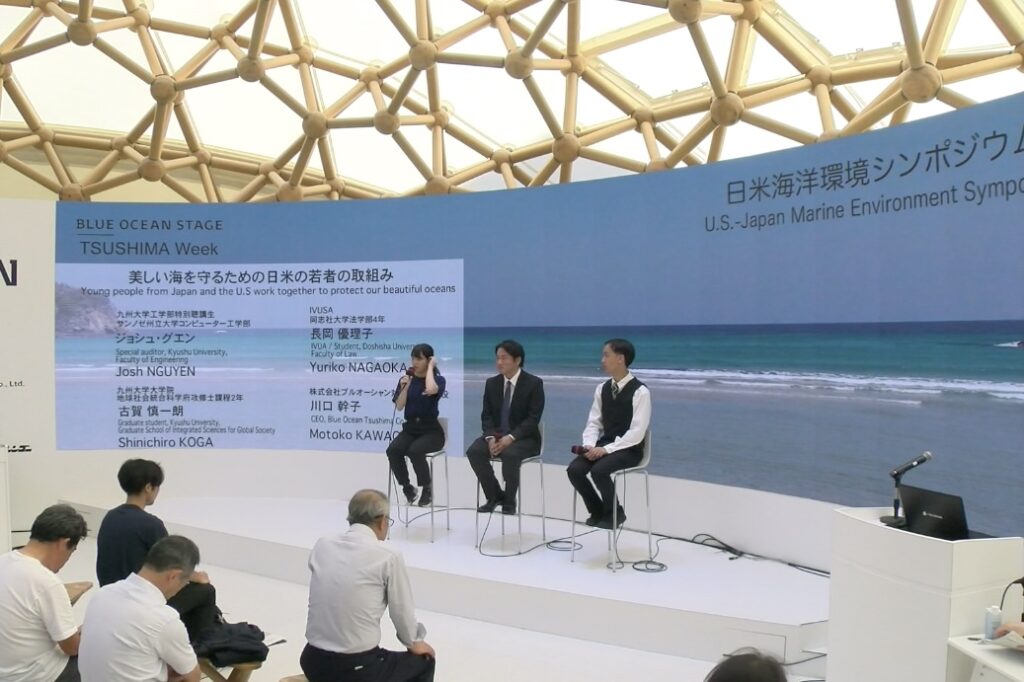
Showcasing the Future of a Circular Economy from Tsushima and Kansai
On Wednesday, June 18, a presentation was given on the results of research and development efforts on the “Tsushima Model,” which aims to realize a circular economy. Moderator Toshihiro Michioka, Chairman of the Circular Economy Committee of the Kansai Economic Association, outlined the “Tsushima Model,” which is being implemented under an agreement signed in September 2022 by Tsushima City, Saraya Co., Ltd., Kansai Recycling Network Co., Ltd., ZERI JAPAN, and the Kansai Economic Association. The Tsushima Model, based in Tsushima City, Nagasaki Prefecture, which aims to become a “zero-waste island,” aims to solve the global plastic problem and contribute to the SDGs and the Osaka Blue Ocean Vision.
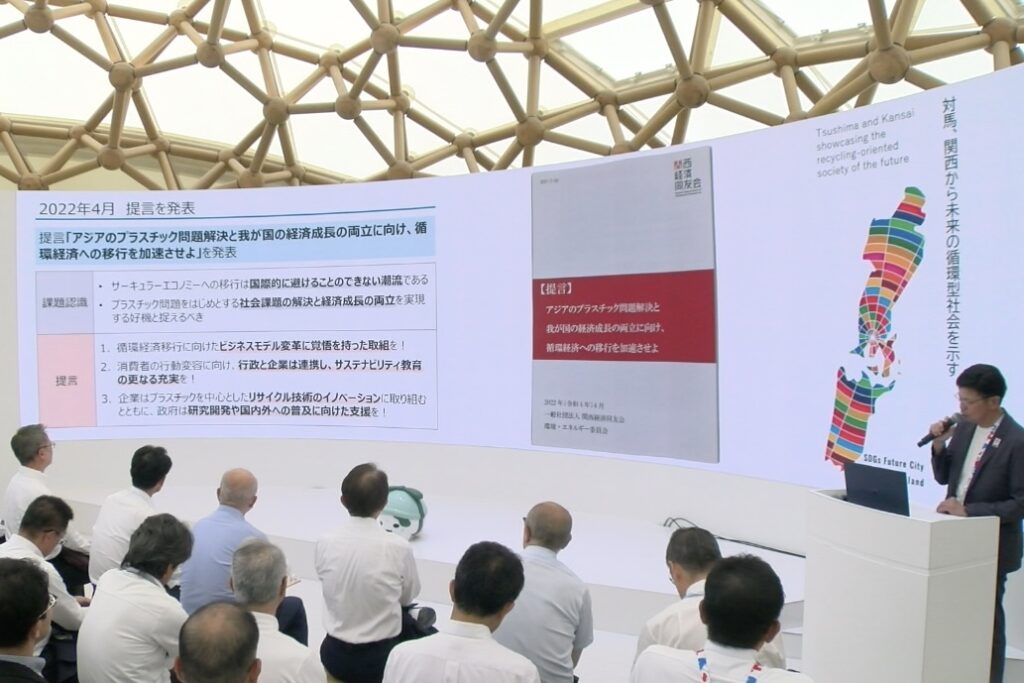
In Part 1, Tsuyoshi Maeda, Deputy Director and Section Chief of Tsushima City’s SDGs Strategy Division, reported on the progress of research and development on the Tsushima Model. This research is driven by three pillars of innovation: recycling technology, product design, and marine plastic waste prevention and recovery. Aiming to balance solving social issues with sustainable economic growth, the Model aims to achieve both social and economic growth. Mr. Kawaguchi, CEO of Blue Ocean Tsushima Co., Ltd., reported on their efforts to recycle marine waste and repurpose it as a resource. He concluded by expressing his desire to continue bringing together various technologies and expertise to create a future norm in Tsushima.
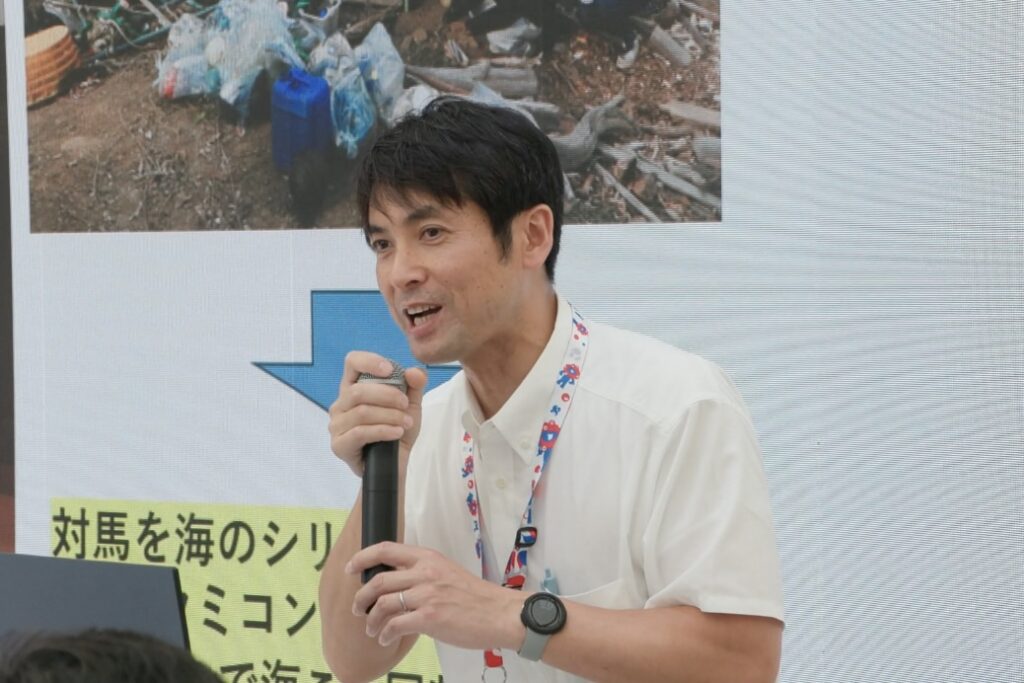
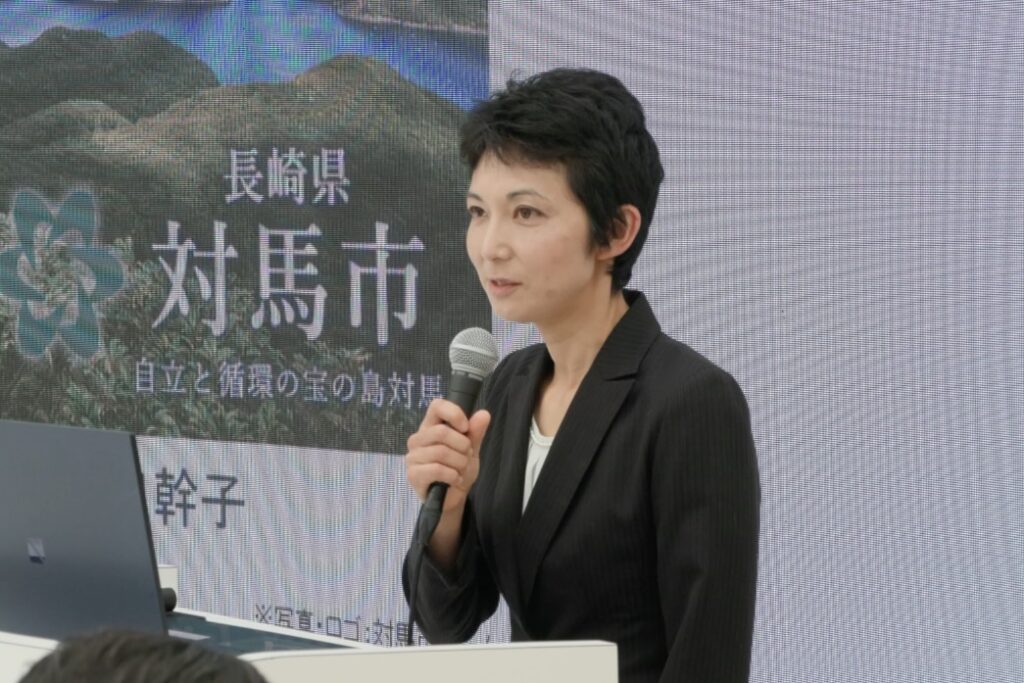
In Part 2, based on the results of the presentation, a discussion was held on solving the global plastic problem and achieving the SDGs and the Osaka Blue Ocean Vision. Speaking at the event, ZERI JAPAN Chairman Saraya spoke about his shock at the current state of marine plastic waste in Tsushima and the significance, potential, and expectations of working on the Tsushima Model as a policy advocacy group. Yuji Fukuda, CEO of Kansai Recycling Network Co., Ltd., spoke about the potential and challenges of the Tsushima Model from a circular economy perspective, solutions, and remaining bottlenecks, based on the results of research and development.
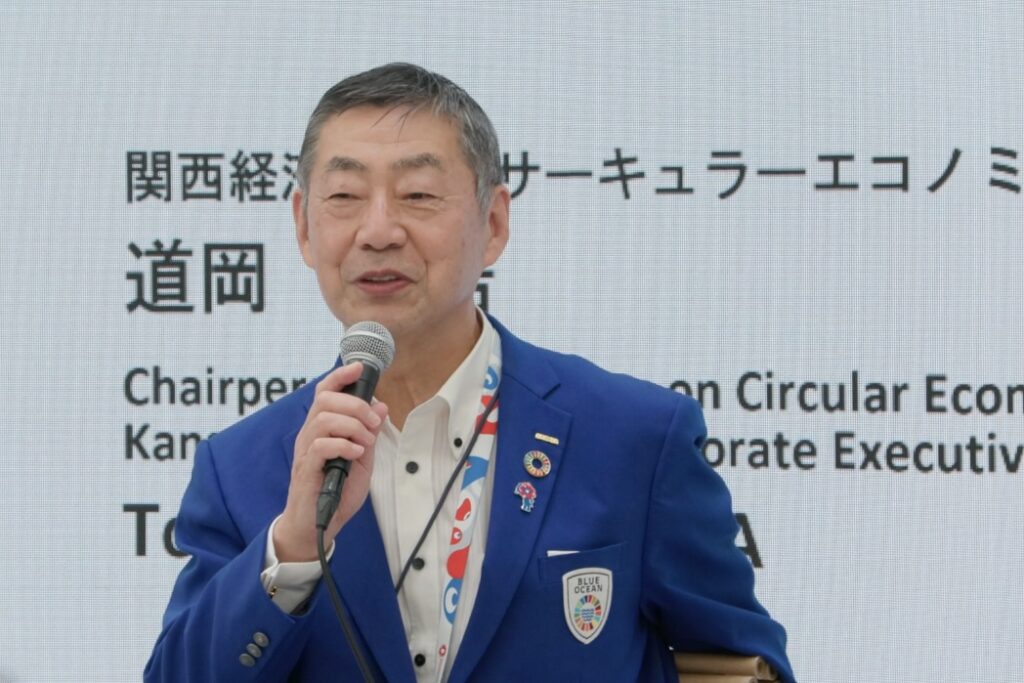
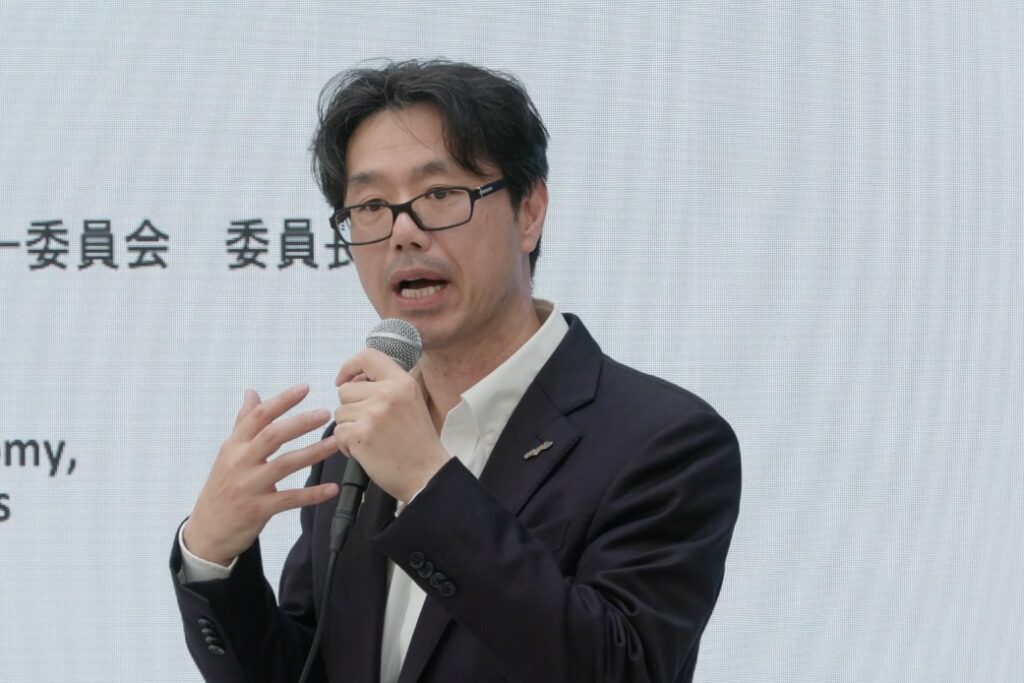
Corporate Initiatives Contributing to the Future of the Ocean
On Thursday, June 19, presentations were given by four companies based in Tsushima City that are working to solve the marine plastic waste problem and achieve business growth.
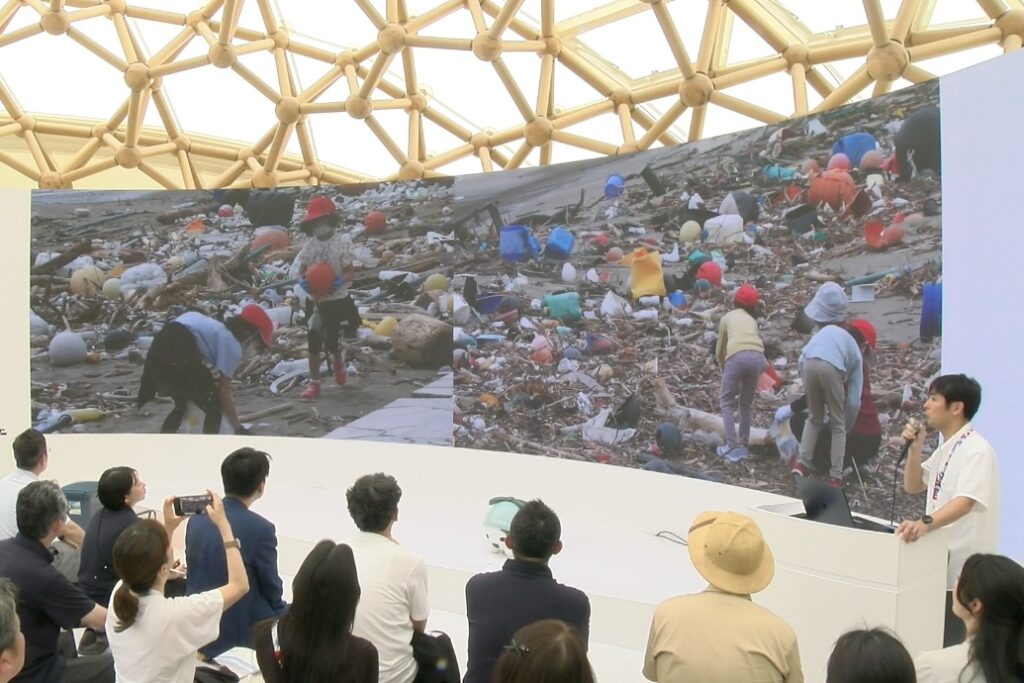
The opening speaker was Yuka Owada, General Manager of Corporate Communications at ASKUL Corporation. ASKUL signed an SDGs collaboration agreement with Tsushima City in February 2021, and has been conducting employee study tours and developing products using marine plastic. Junji Hakozaki, Kyushu Explorer and Public Relations Officer at the Sales Management Department of Hakata Daimaru Co., Ltd., proposed a plan to leverage the department store’s brand power to collaborate with artists and creators to raise awareness of the marine environmental crisis from Tsushima to the world and work to resolve the issue.
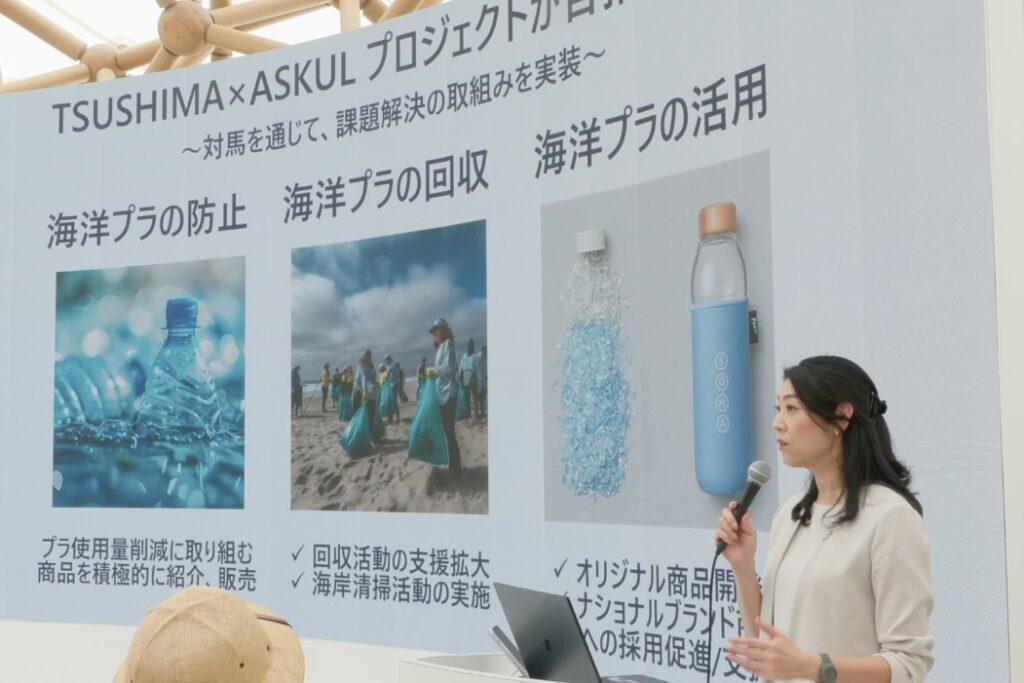
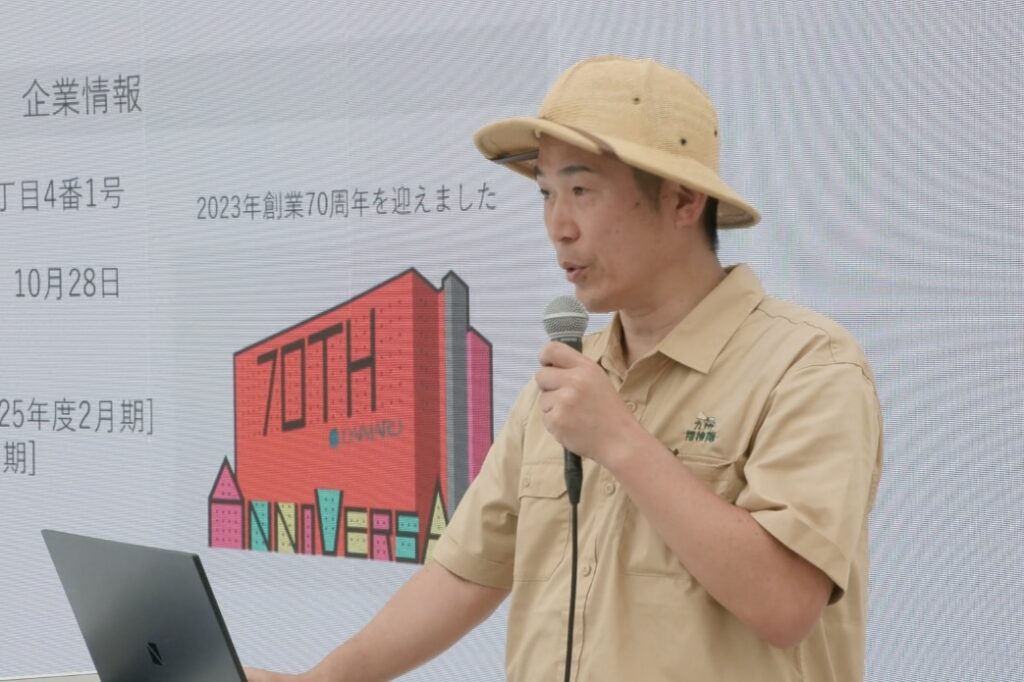
Kaori Yoshida of the Planning Section 1, Research and Planning Department, Central Research Institute of Rengo Co., Ltd., explained their project to restore seaweed beds through the development of seed threads made from cellulose that biodegrades in the ocean. Shinji Matsumoto, a researcher in the Global Environmental Harmony Research Group, Cement & Concrete Research Institute of Sumitomo Osaka Cement Co., Ltd., focused on a fish reef project that uses the company’s concrete technology to create a habitat for fish.
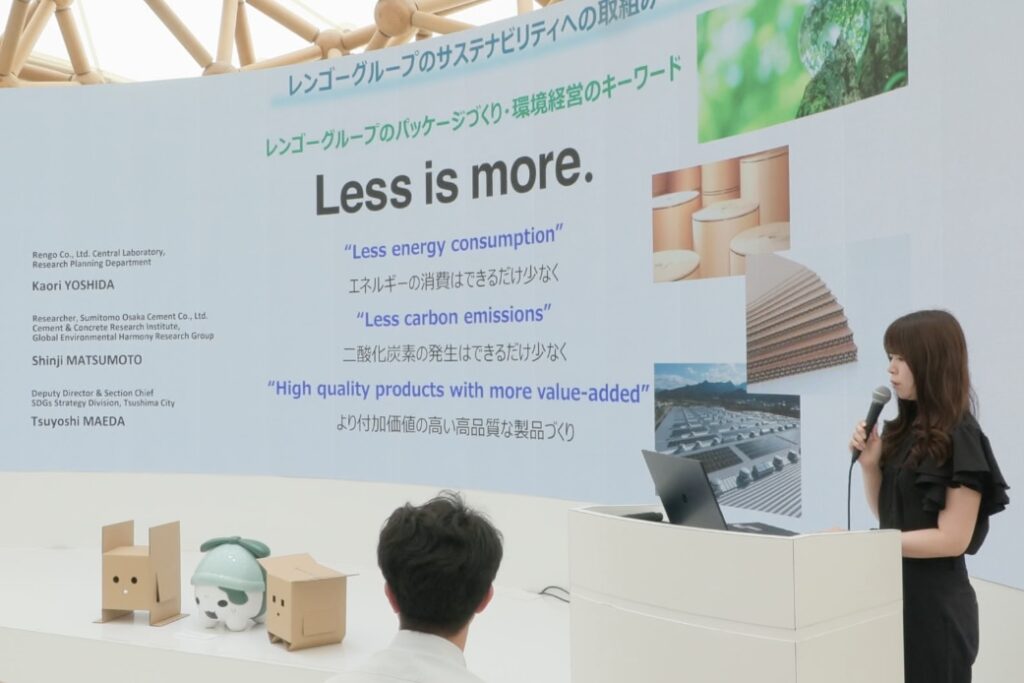
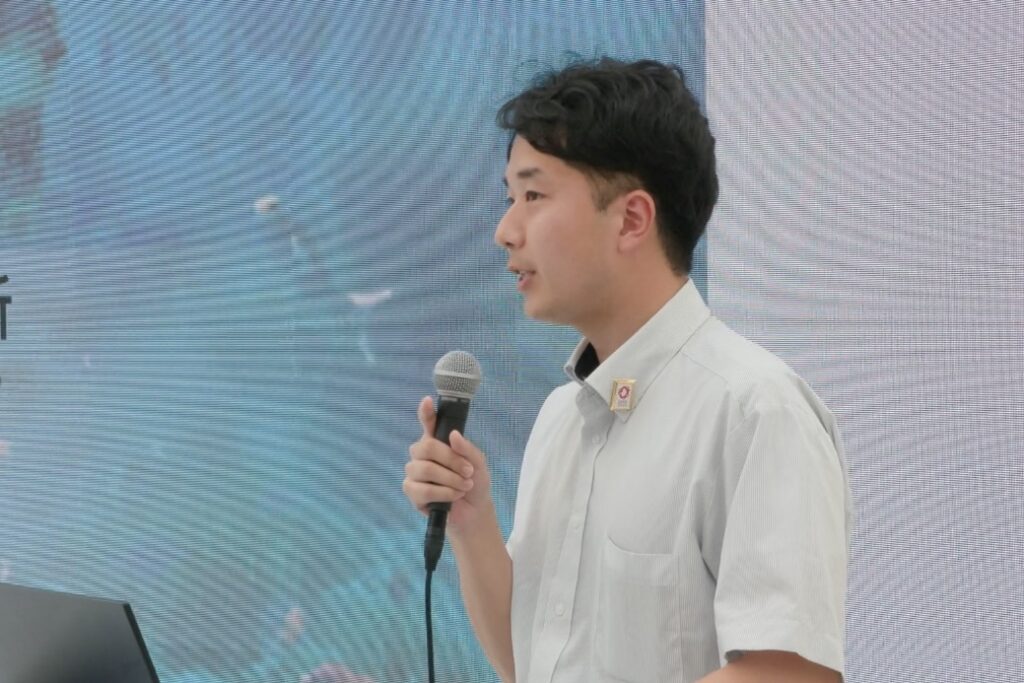
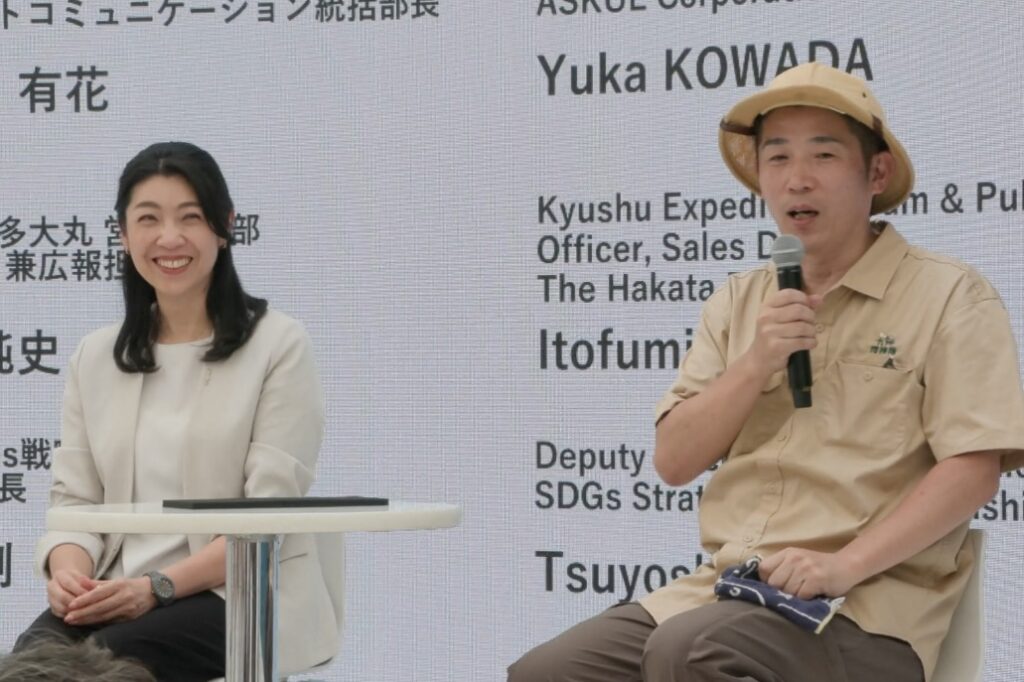
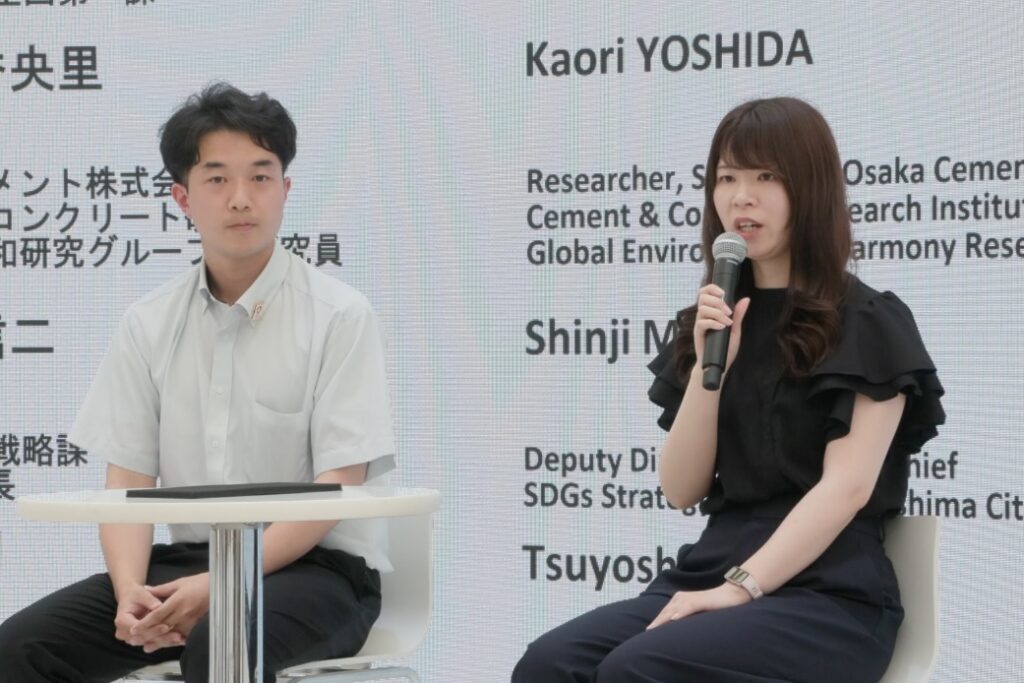
Learning and Business Ideas at Tsushima Blue College
On Friday, June 20, Nobuhiko Komiya, professor at the Graduate School of Project Design, moderated a presentation on business ideas by six participants of Tsushima Blue College, a program that cultivates innovative talent to solve marine issues. Aya Kamasaka, a former Tsushima City Regional Revitalization Support Team member in charge of supporting the regeneration of sea forests, presented a plan to create a base for marine education and tourism on Tsushima, centered around the concept of a “Fisherman’s Aquarium.” Yosuke Tashiro, section manager of the Toyotama branch of Juhachi Shinwa Bank, proposed a plan to increase the number of people working in the marine industry, which is facing challenges of a lack of successors and information, through matching support such as the “Marine Industry Job Encyclopedia,” with the bank becoming a “regional player.” Ryodai Kihara, section manager of Section 3, Equipment Planning and Design Department, Product Development Headquarters, Saraya Co., Ltd., presented a concept for a “Connecting with Tsushima” platform that processes, freezes, and develops sales channels for Tsushima’s seafood, returning profits to fishermen. They all emphasized the need to rebuild sustainable fishing practices.
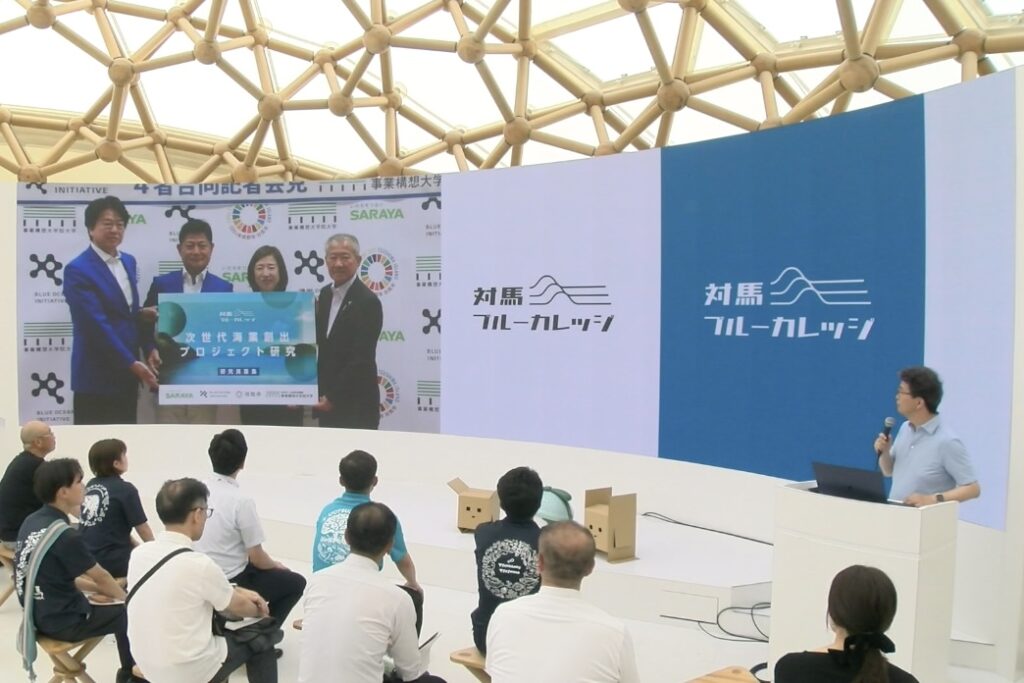
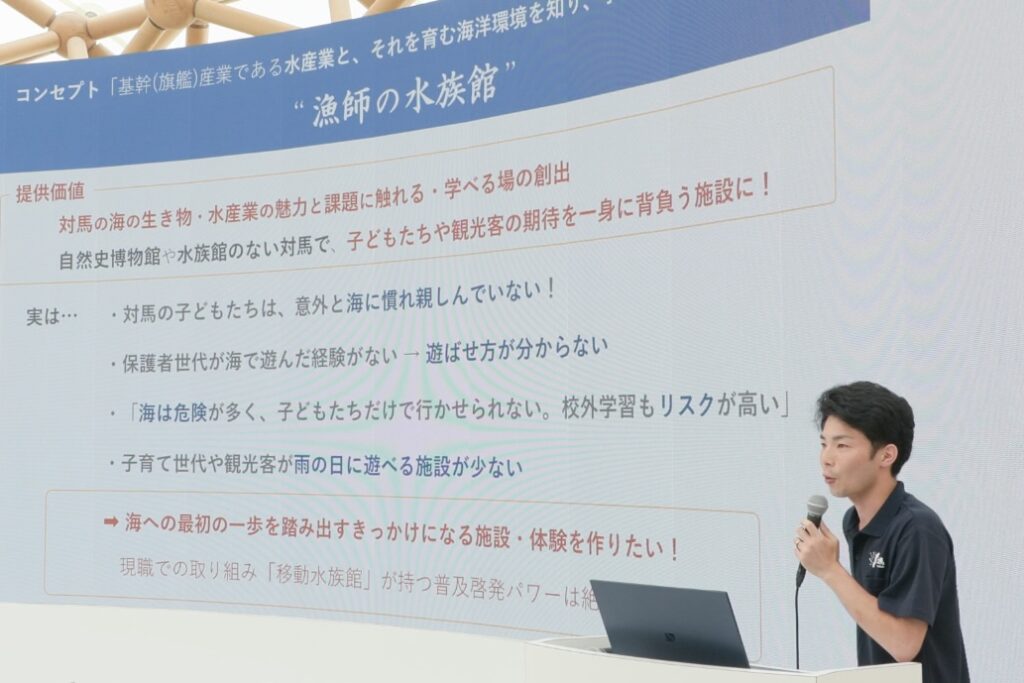
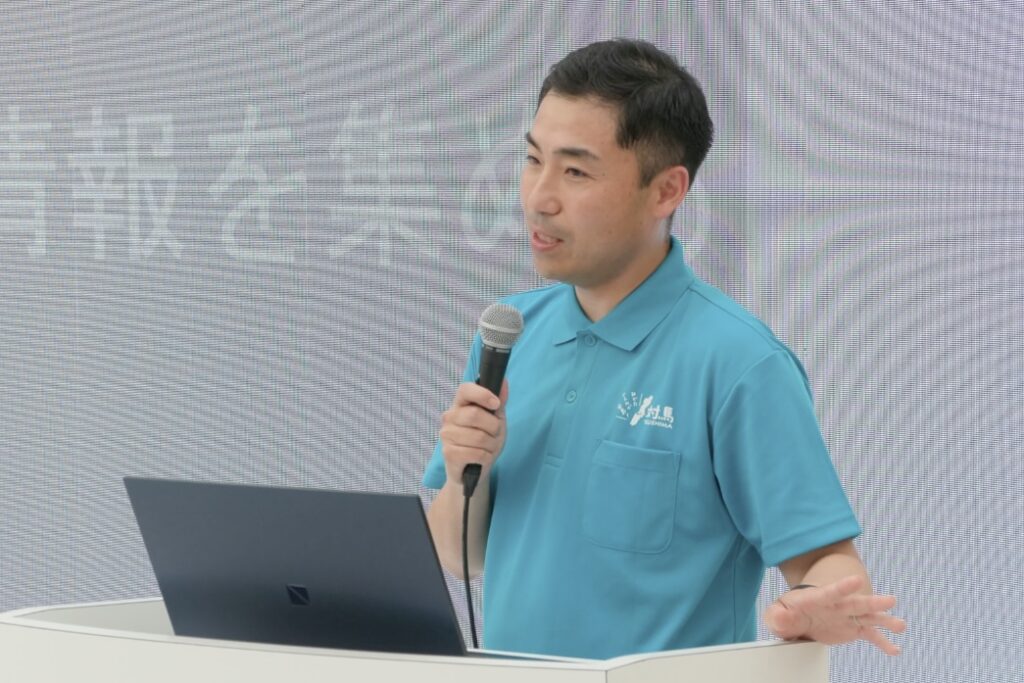
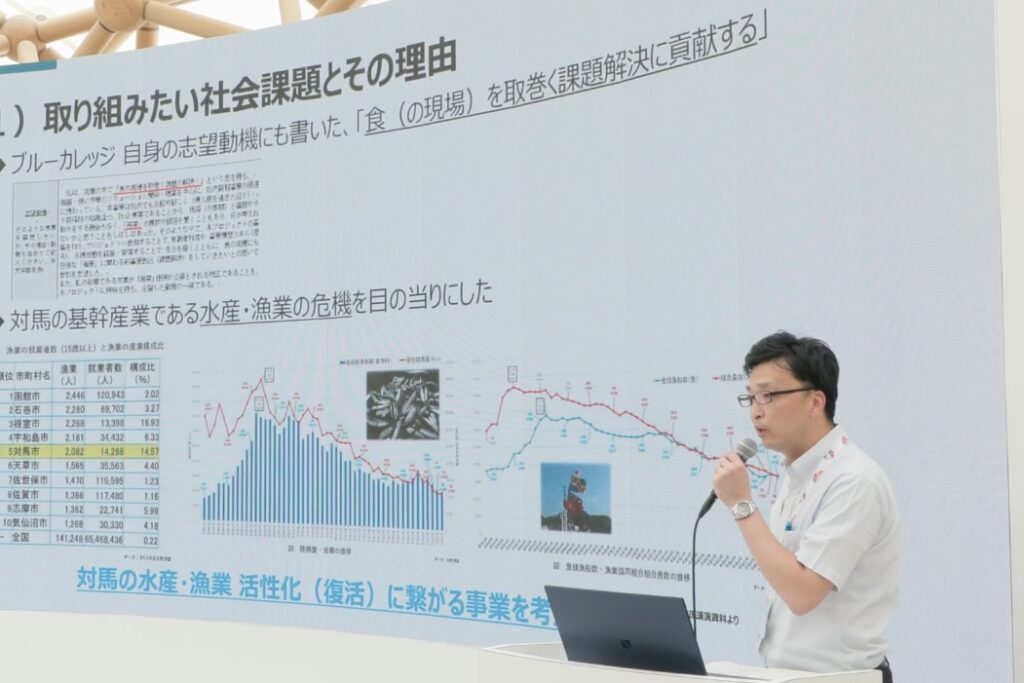
Next, Nozomi Funahara, Travel Product Planning Officer at the Tsushima Satoyama-keieijuku Educational Division, spoke about her “Fishing Port Cafe” initiative, which connects people with the sea and each other through coffee. She spoke about the challenge of expanding the number of visitors and passing on culture through the creation of a community space that preserves fishing culture and local memories. Katsutoshi Maruo, President and CEO of Ocean Patrol Co., Ltd., proposed the “DX Marine Debris Collection World Championship,” a new form of entertainment that involves collecting marine debris, with the aim of contributing to the economic benefits of disseminating information and attracting visitors to the island. Yasunori Shugi, Deputy Director of the Food Hygiene Department, Sanitation Business Headquarters, Tokyo Saraya Co., Ltd., proposed the establishment of the Tsushima Eco-Label Association. He discussed how certifying products that are good for Tsushima and establishing a regional brand would lead to quality assurance of local products and the improvement of environmental issues. Finally, Tsushima Deputy Mayor Tsutomu Ichinomiya took the stage and concluded the event by expressing his desire for the government to support the business concepts developed from the six individual perspectives.
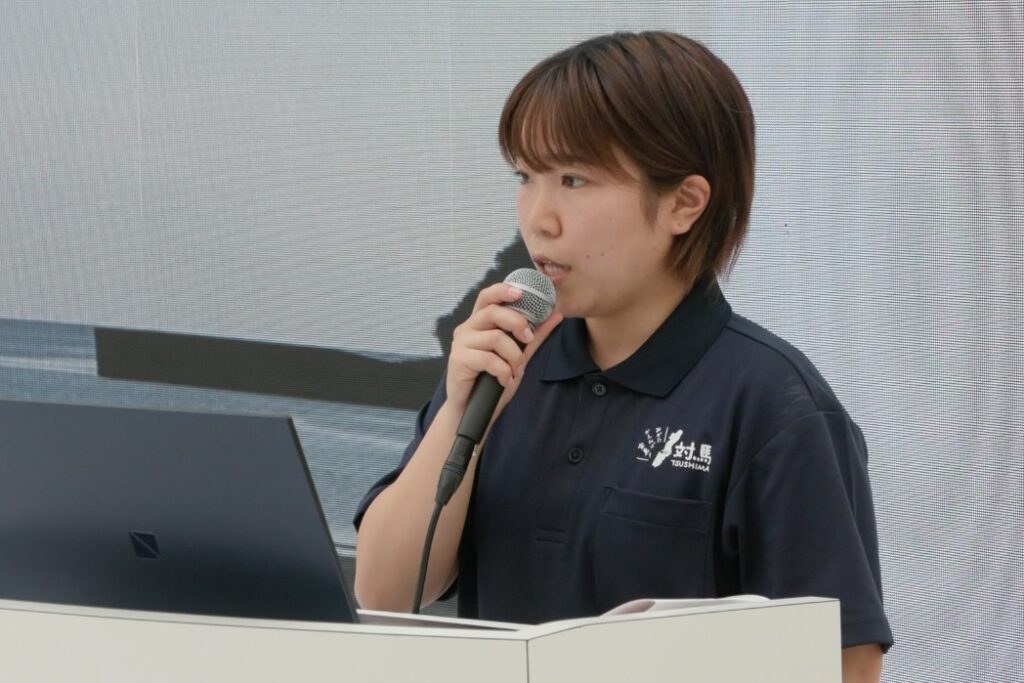
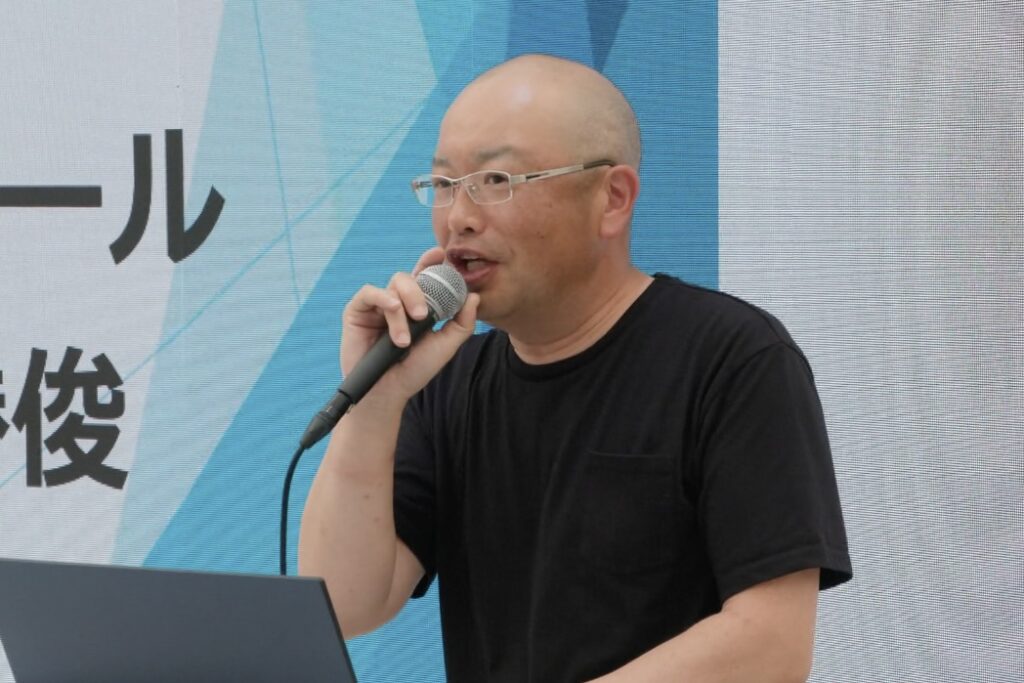
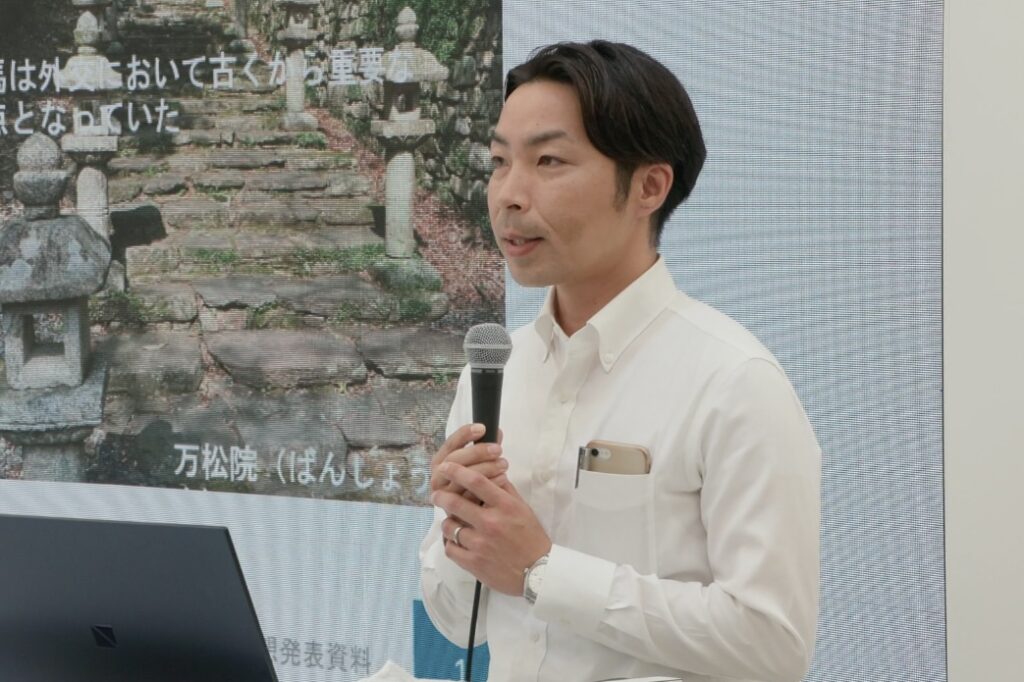
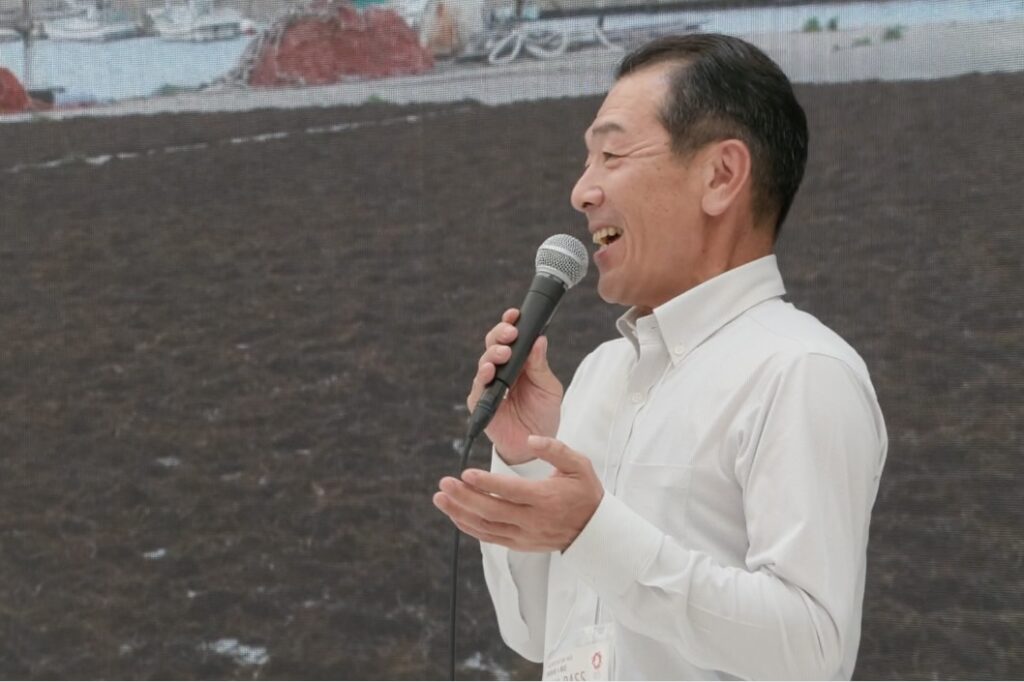
A Beautiful Ocean for the Future
On Saturday, June 21st, moderator Eriko Ozaki, Career Education Planner at the Ikoma City Education Guidance Division, hosted a presentation titled “Exchange Learning between Island and City Children.” Students from Tsushima City Nishibu Junior High School and Ikoma City Komyo Junior High School presented the results of their classes. The exchange learning program has been ongoing since October 2024, and the presentation at the Expo site served as an opportunity to further exchanges in the future. In the talk session, representatives from each junior high school took the stage, along with Yuta Karakane, Director and Sales Manager of Ringstar Co., Ltd., a company in Ikoma City that manufactures products using Tsushima’s marine plastic. He concluded by expressing his desire to become a role model leader for children, striving for a future society where both convenient living and a beautiful ocean coexist.
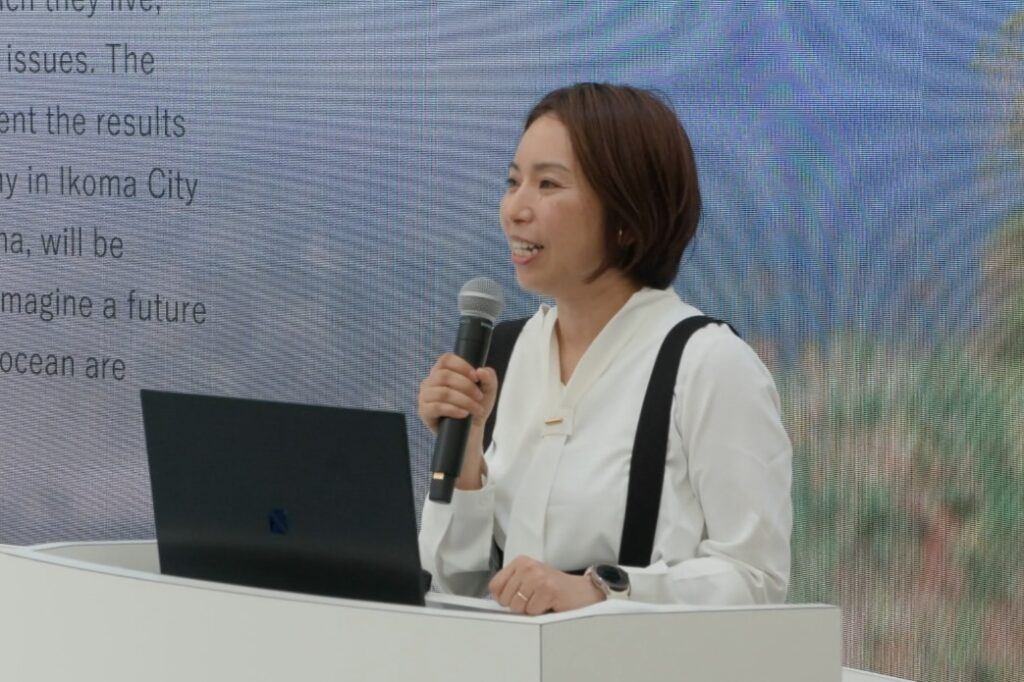
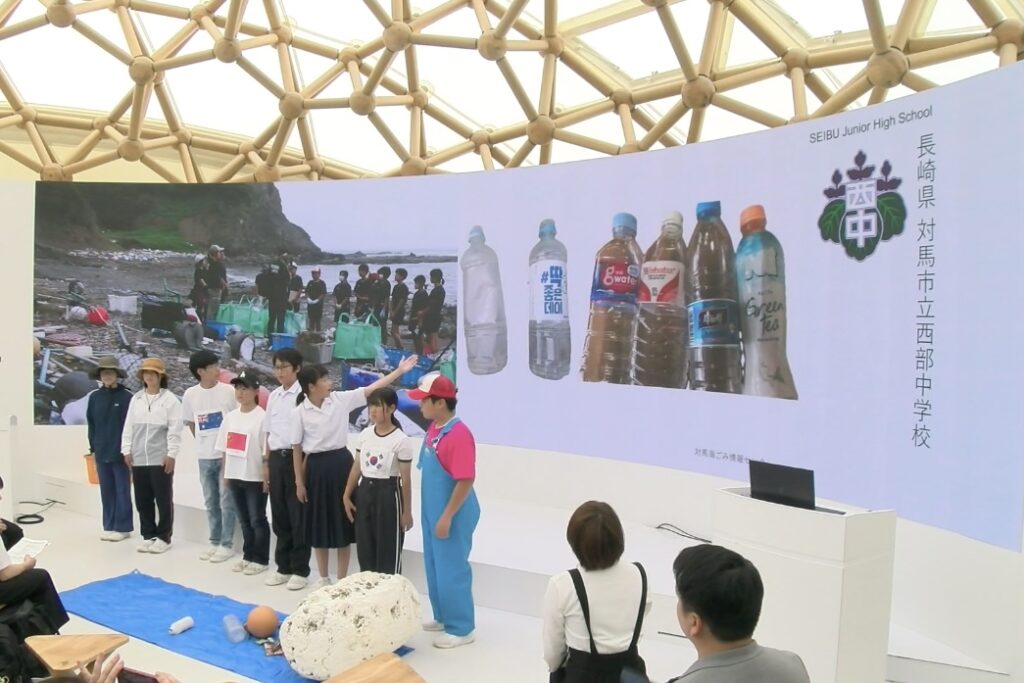
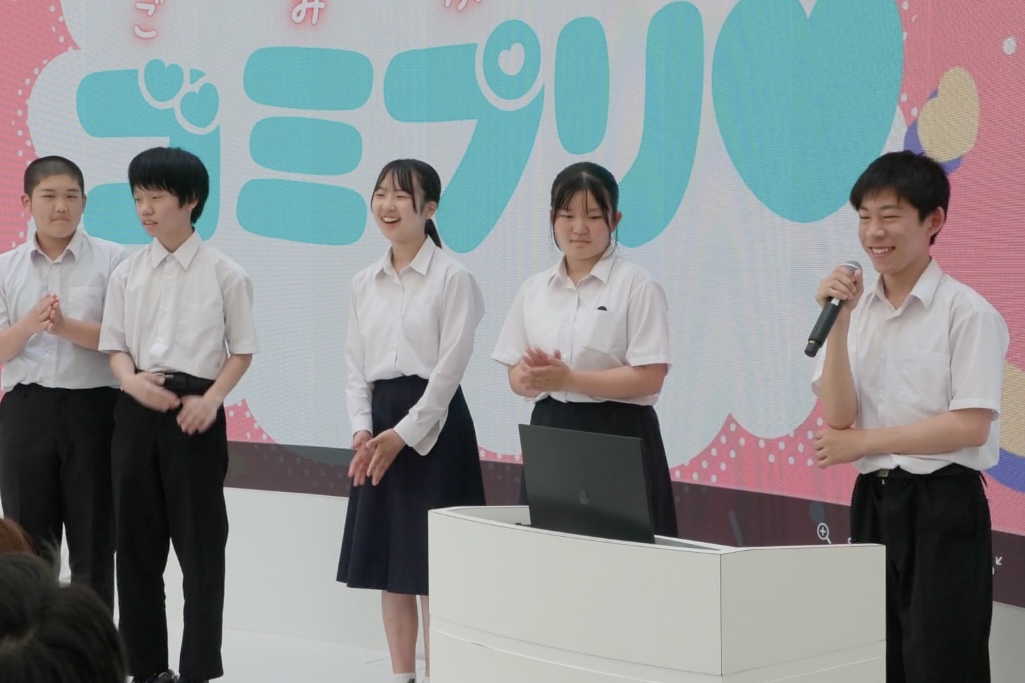
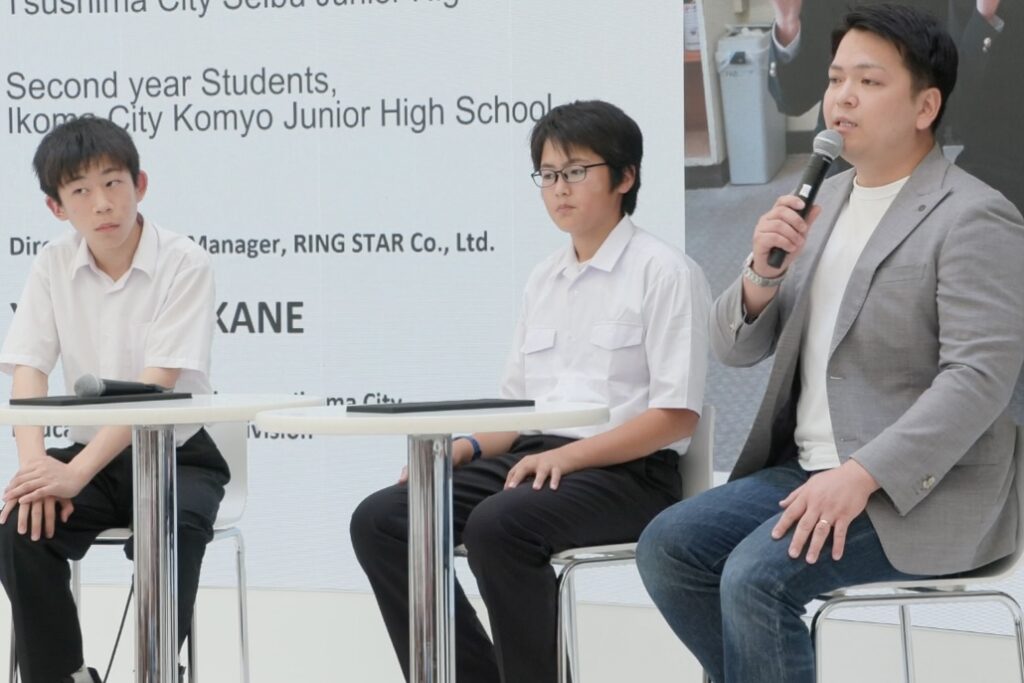
In the following lecture, students from Nagasaki Prefectural Toyotama High School presented ideas for solving social ocean challenges under the theme of “Ocean Innovations as Seen by Island High School Students.” Moderator was Mr. Maeda, Deputy Director and Section Chief of Tsushima City’s SDGs Strategy Division. The students split into four groups and shared their ideas for protecting their hometown’s ocean and their “hopes” for its future. Maeda congratulated the students, saying that their presentations at Tsushima Week, the culmination of a year and a half of their work, will help them grow and inspire pride in the island.
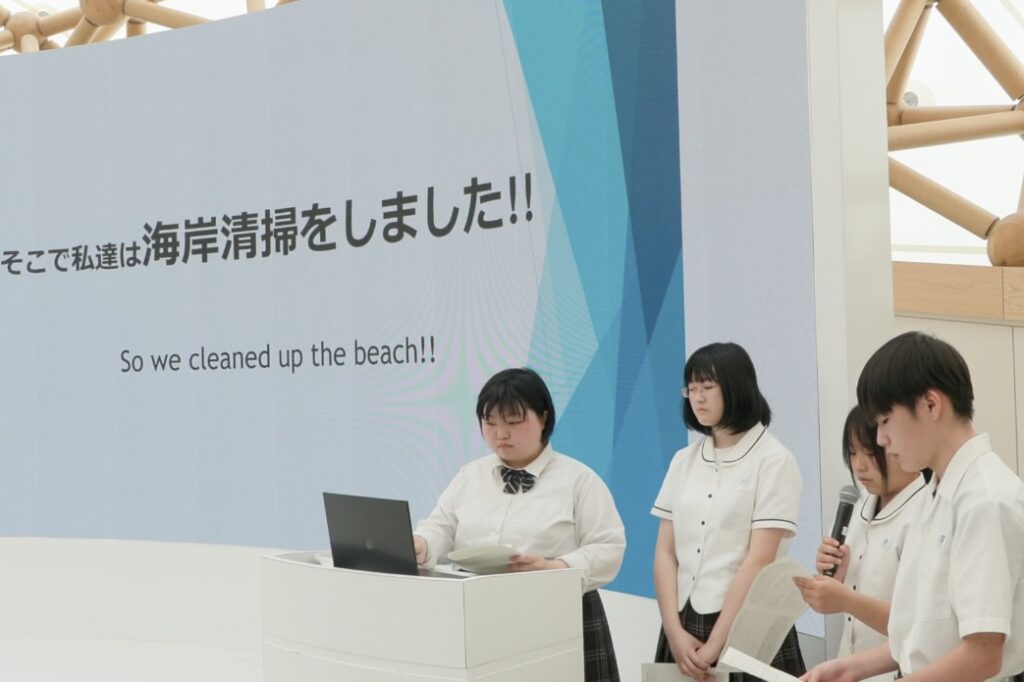
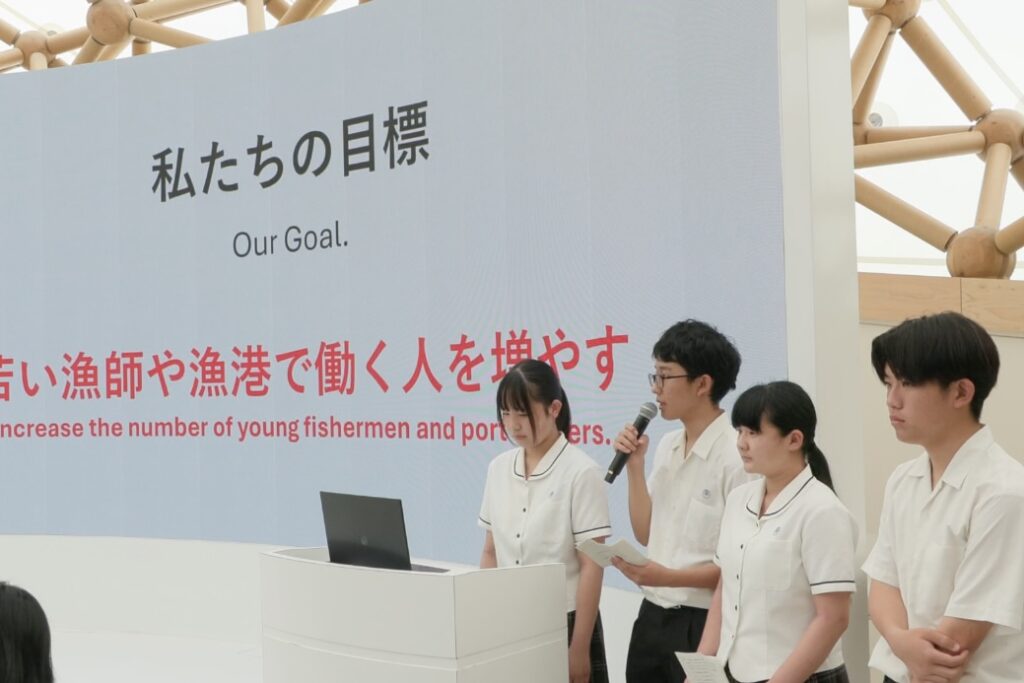
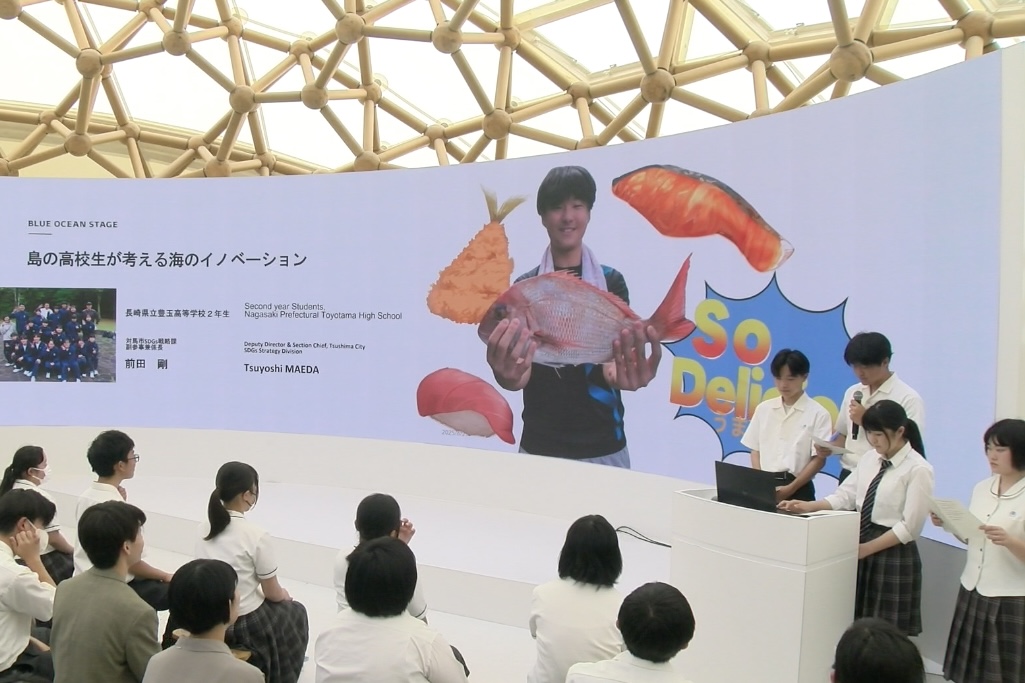
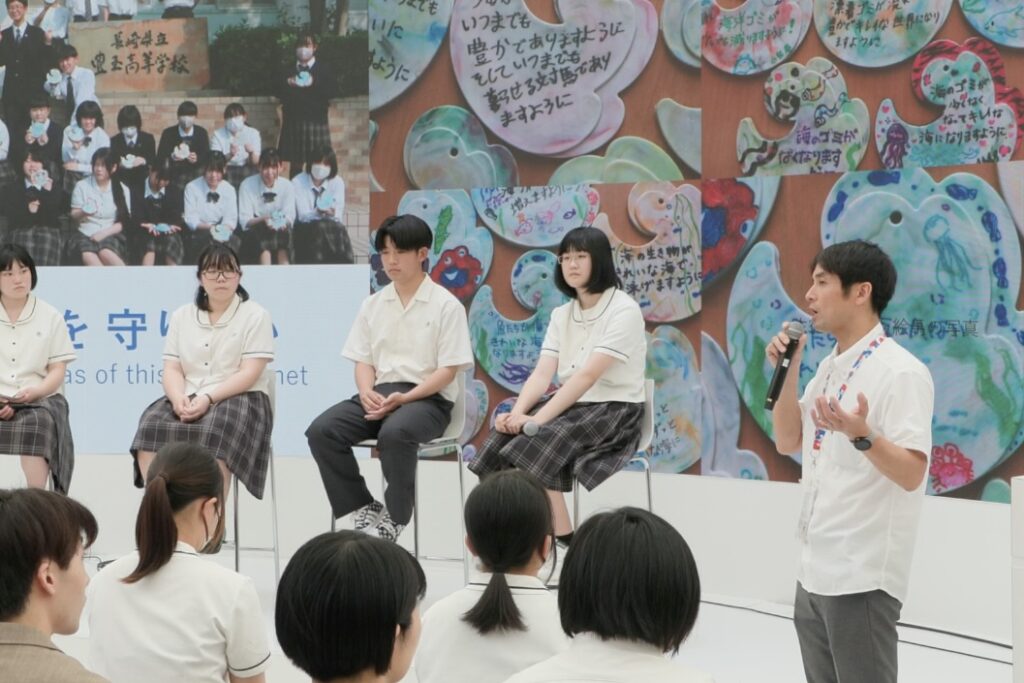
Next, a talk session titled “Otosha and the Waves of Thought” was moderated by Shinji Hamaguchi, Director of the Sustainable Design Development Center, Product Development Division, Saraya Co., Ltd. “Otosha” is a sea god created by Professor Taketoshi Terai, a Holistic Design major at Kanazawa College of Art, and 80 students. He is being used as a symbolic character to raise awareness of Tsushima’s marine debris problem. During the lecture, Moeka Sakurai, a Holistic Design major and representative of the production team, presented the concept behind “Otosha.” The talk session, featuring Kojima Hiroaki, vice director of the NPO Karatsu Farm & Food and in charge of PreciousPlastic Karatsu, expressed hope that “Otosha’s Story,” which children can enjoy, will help spread awareness of the current state of Tsushima’s oceans.
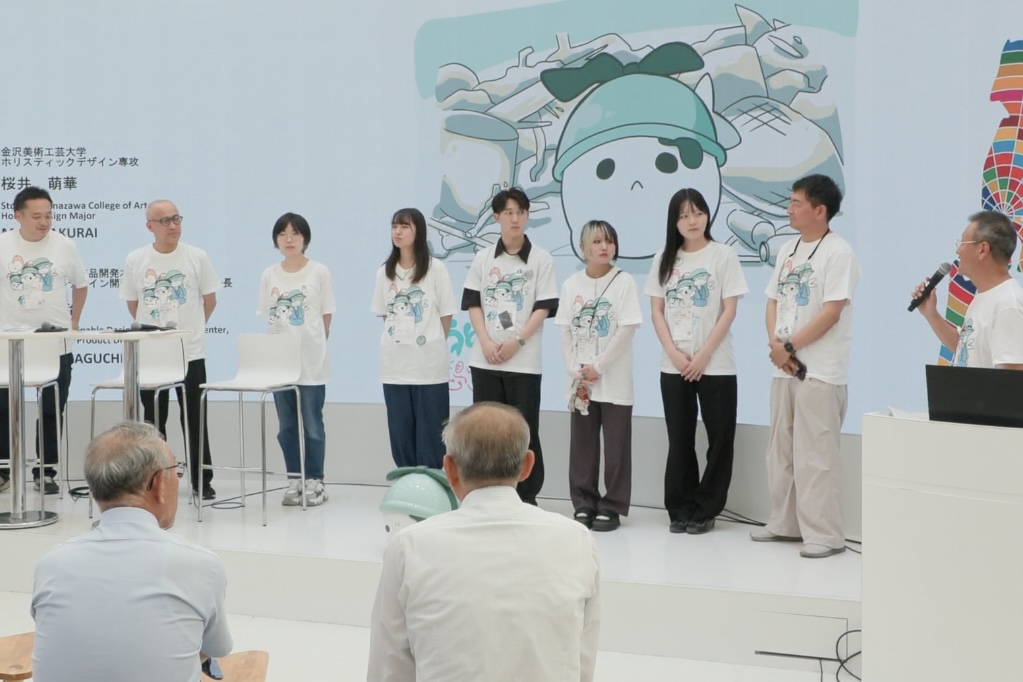
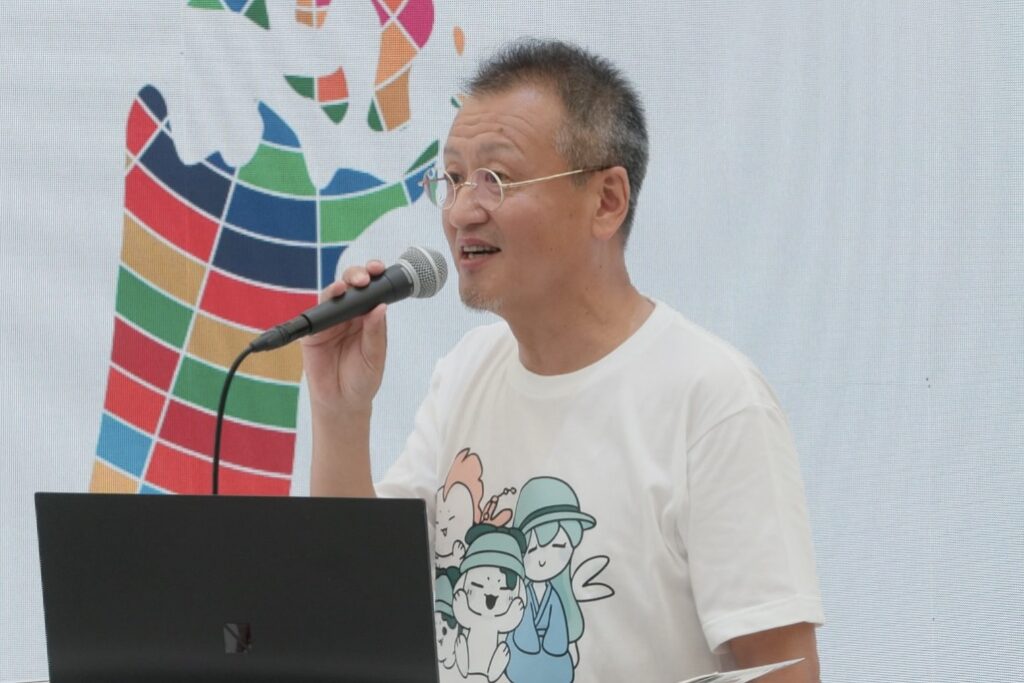
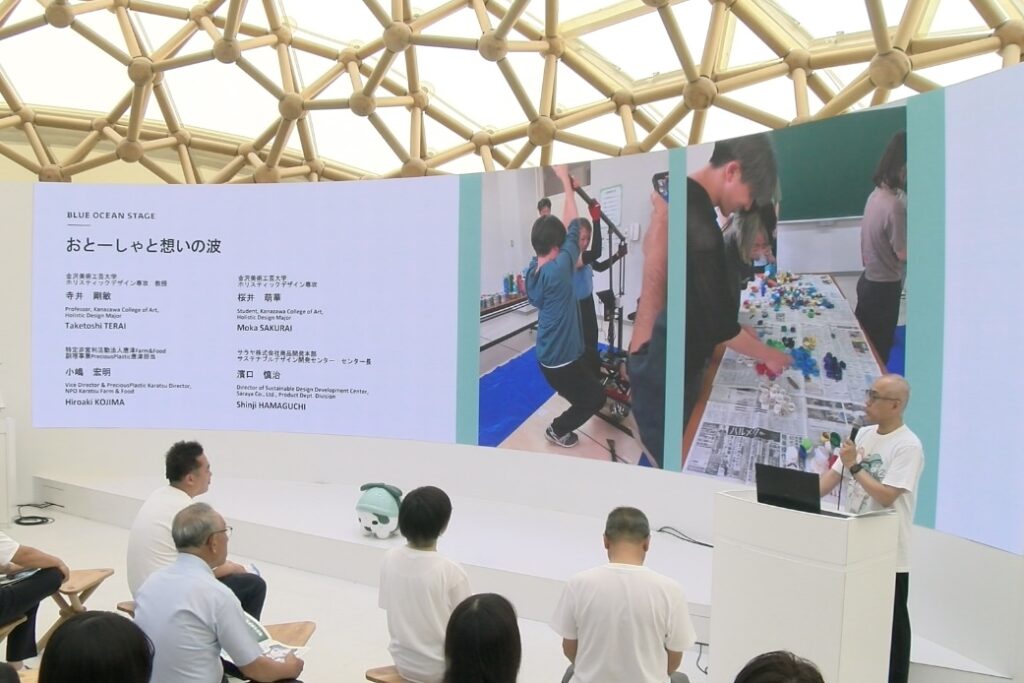
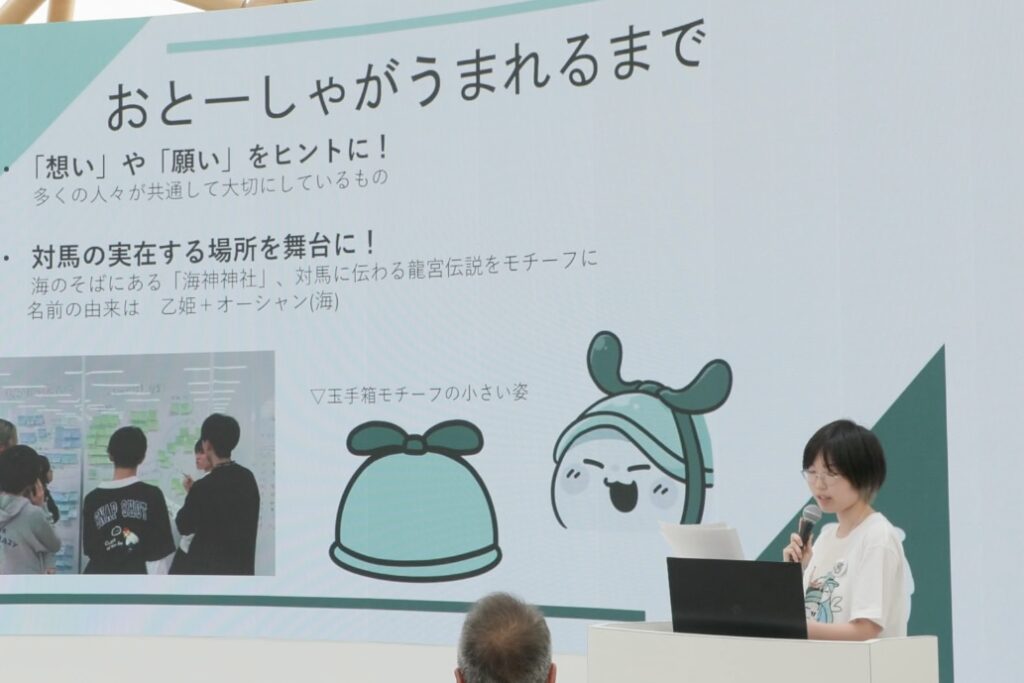
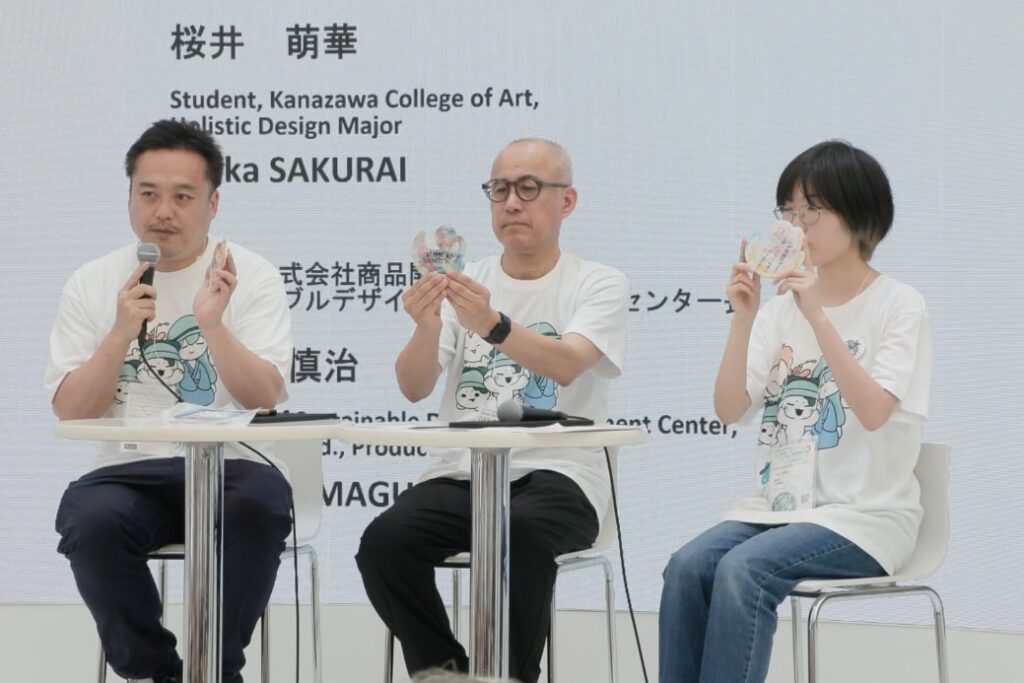
The day concluded with a discussion on the theme of “The Future of the Oceans through the Power of Art, Video, and Entertainment,” bringing together university video production clubs, artists, and community theater groups striving to realistically convey the current state of the oceans to discuss their “hopes” for the future of the oceans. First, a video created by Nezu Ryohei, representative of Bilder., a content production and dissemination organization at Rikkyo University, was screened. Nezu stated that his organization will continue to use video to design society and create opportunities. He also mentioned that he is working on a project to communicate environmental issues through art.
Minami Shibata, a reclaimed material artist who is also involved in the project, explained her “Ocean Good Art” initiative, in which a portion of the sales of artworks made from marine debris goes toward marine debris removal costs. Akiko Sakata, representative of the Tsushima SDGs Theater Company, also explained her theater company’s concept of considering Tsushima’s future and emphasized the potential of art and entertainment to change the future of the ocean.
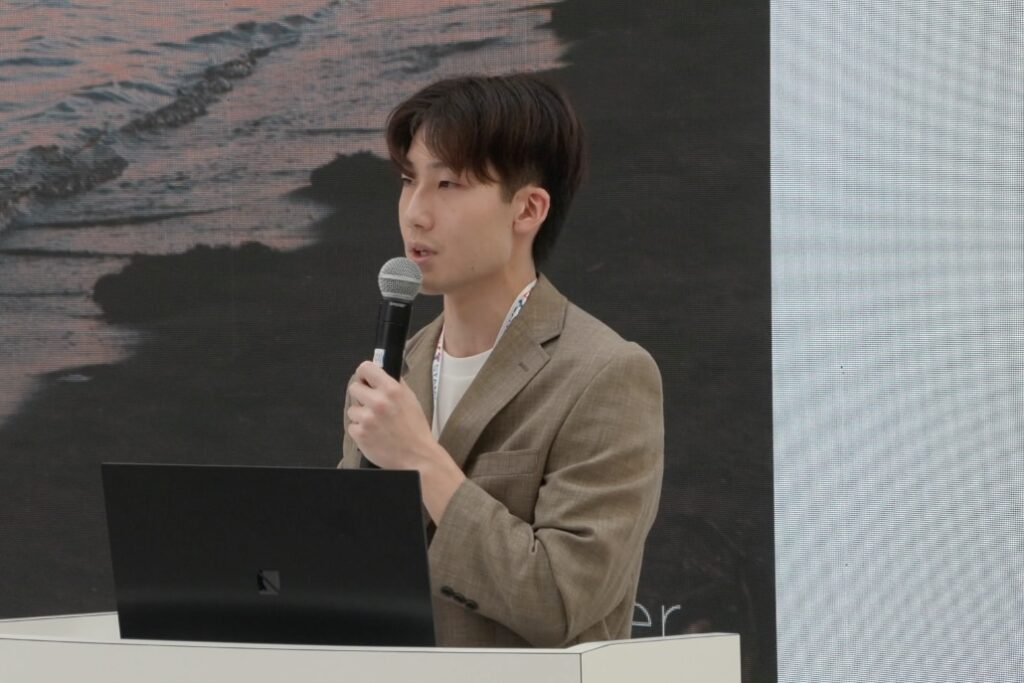
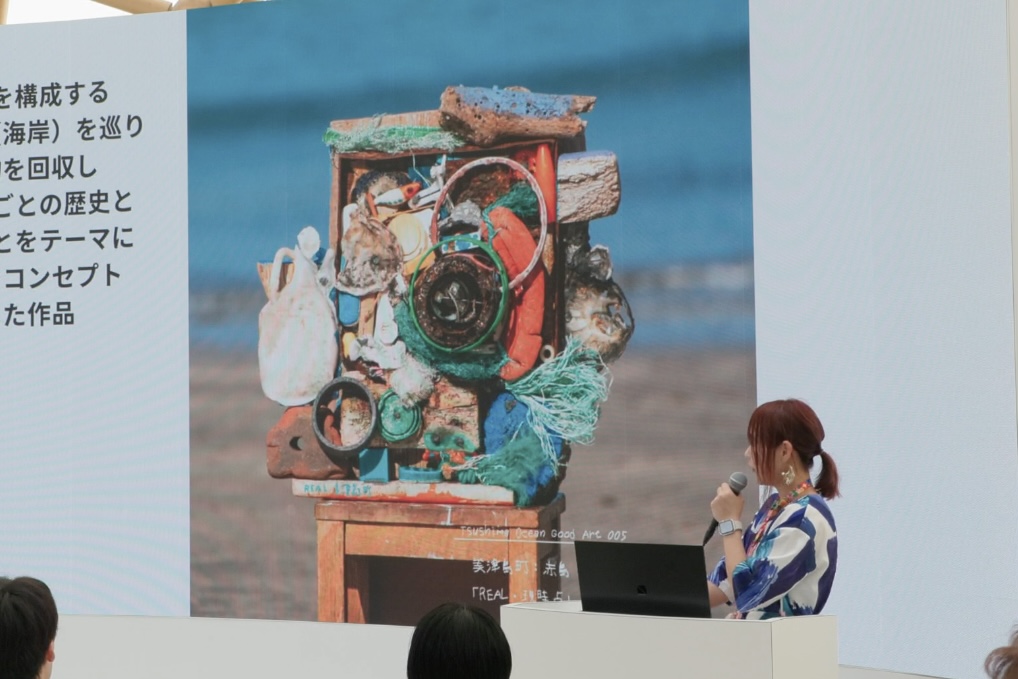
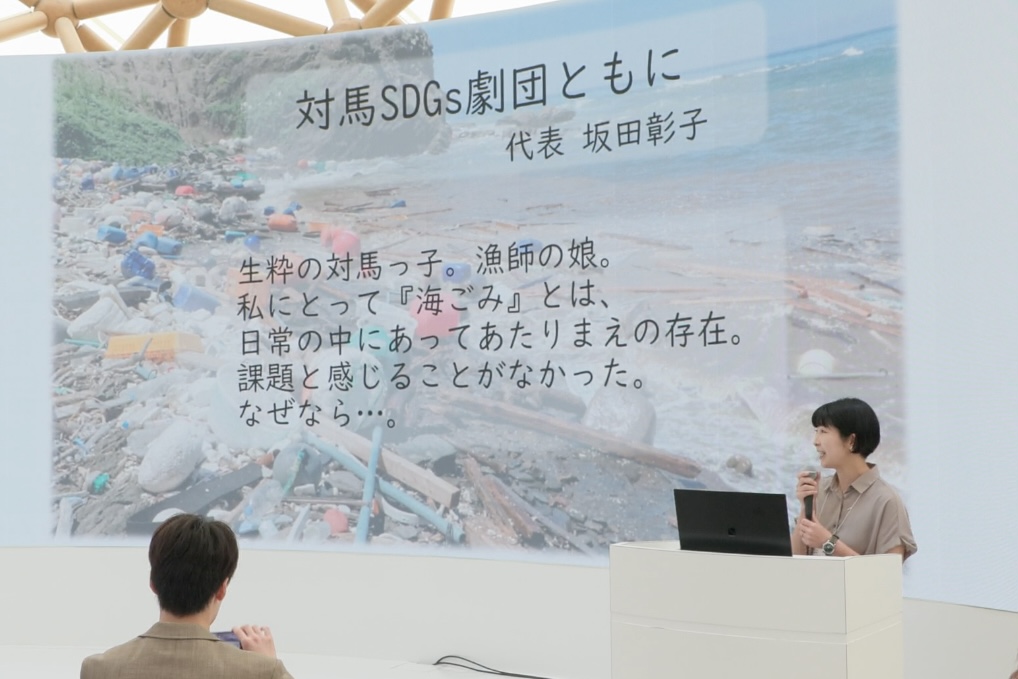
Making “Wave Ema” of Marine Plastic and Praying for the Future of the Ocean
On the final day of the week-long Tsushima Week, we held a “Wave Ema”making workshop. Participants upcycled plastic bottle caps and fishing nets collected from Tsushima’s coasts to create votive plaques, on which they wrote their thoughts and wishes for the ocean. Ema hanging scrolls made from driftwood washed ashore on Tsushima carried the wishes of various people for the ocean.
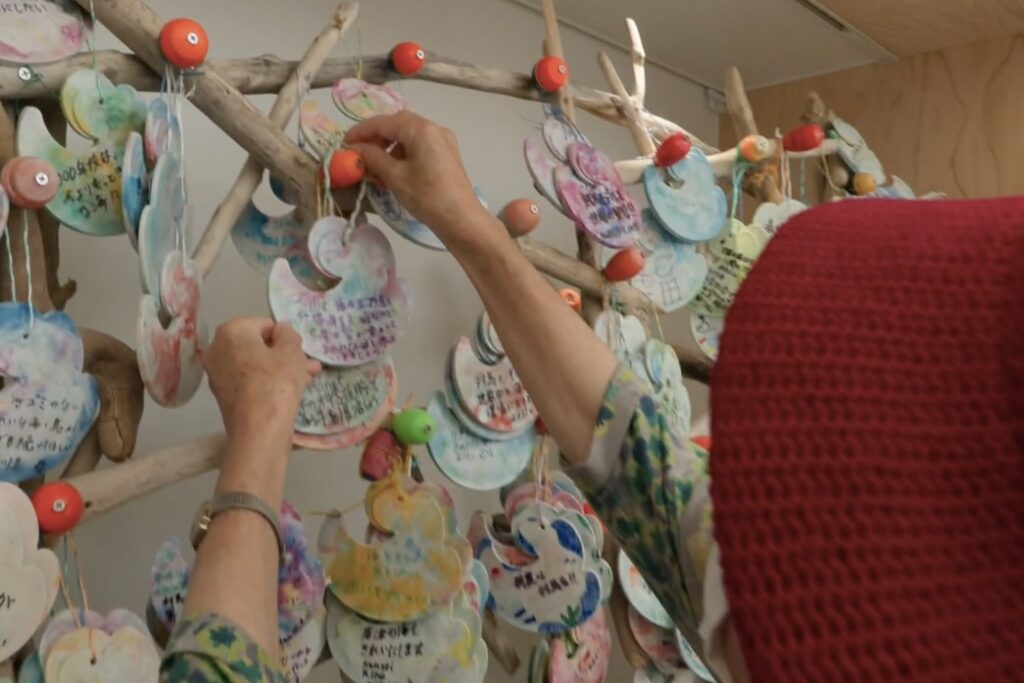
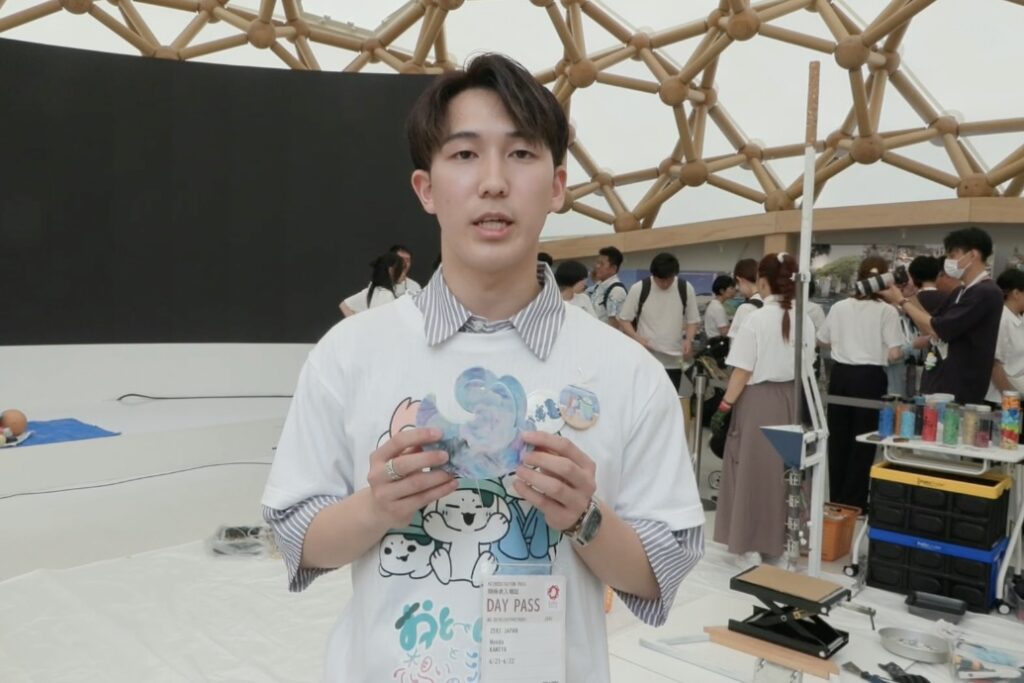
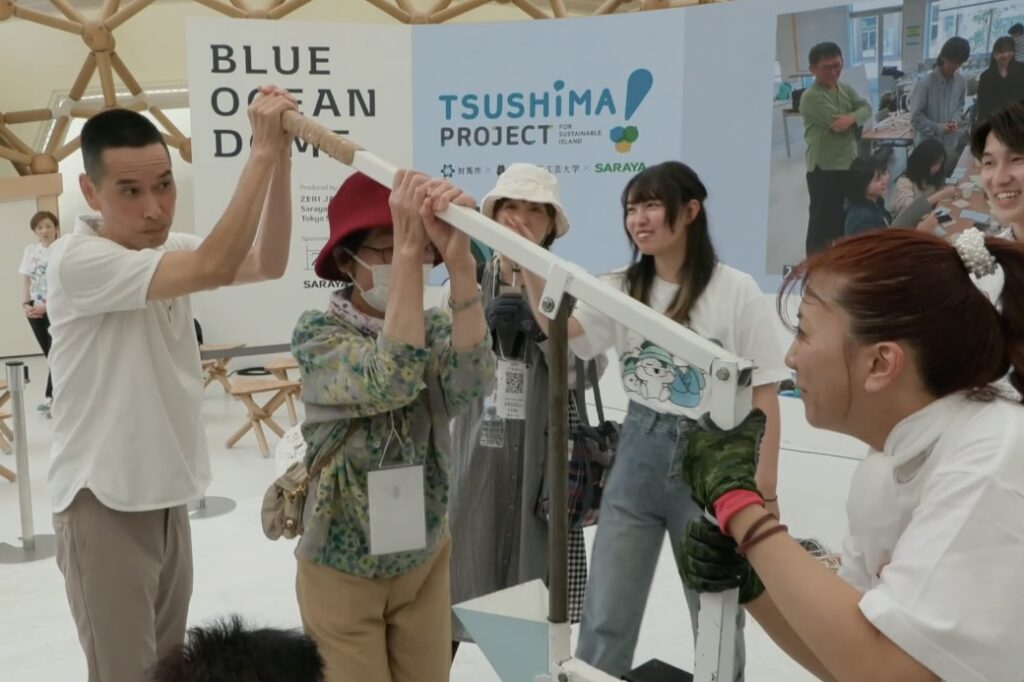
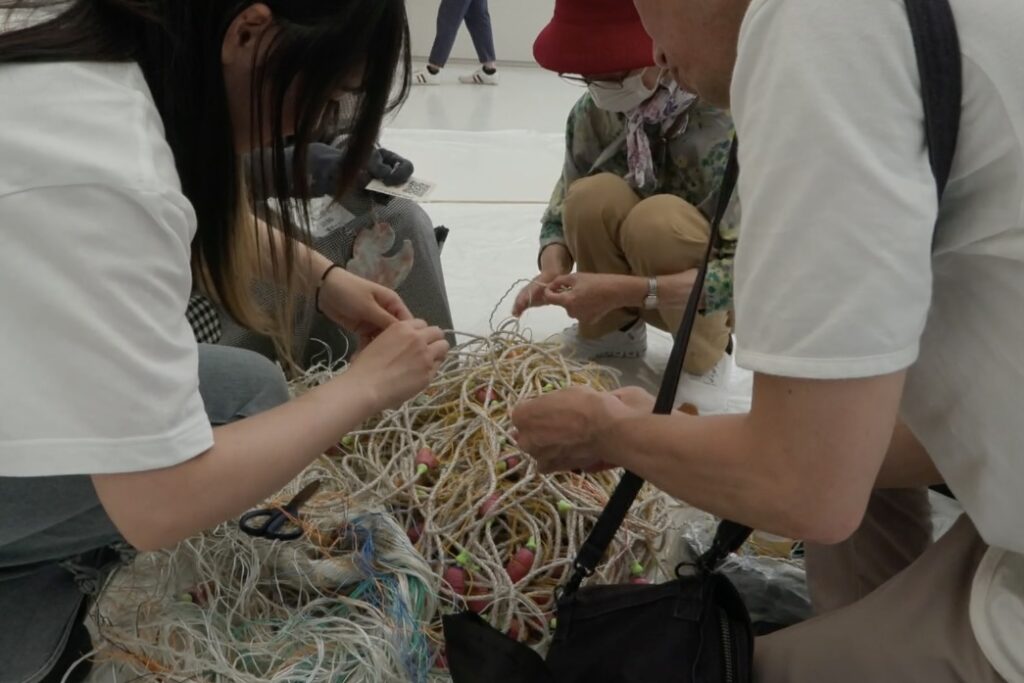
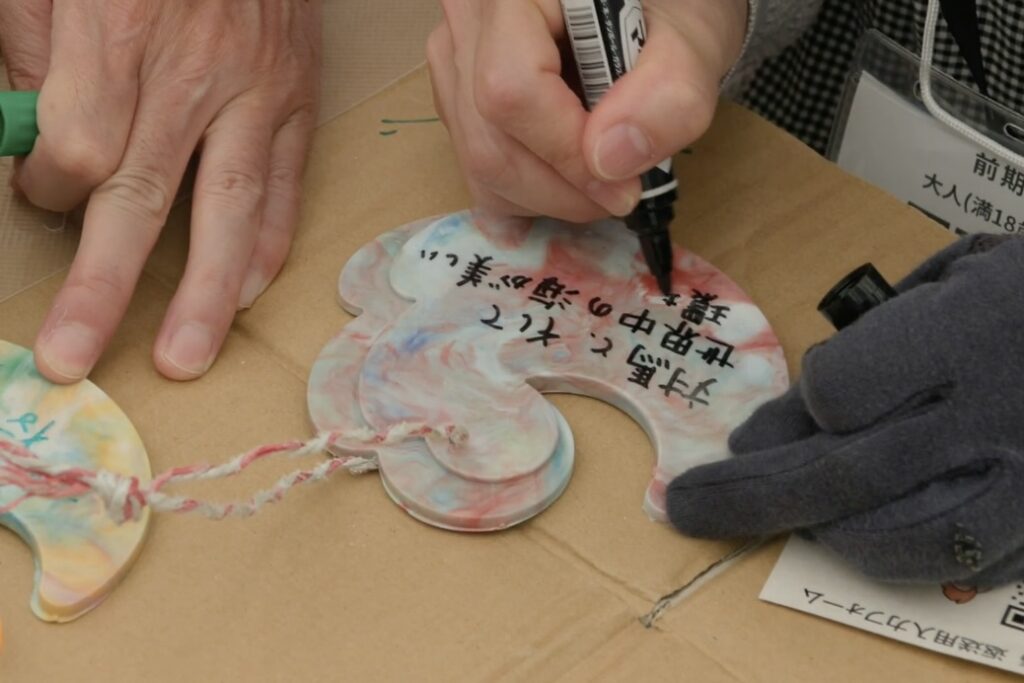
Wishing for the Future of the Ocean Together with the Islanders
In the following lecture, Mayor Masato Maedomari of Taketomi Town, Okinawa Prefecture, Tsushima’s sister city, was invited to discuss environmental issues. The two cities, which have cooperated as cities where wildcats live, are also sharing the marine issues facing the remote islands and continuing to work together to resolve them, including by exchanging information. Taketomi Town provides marine education to children with a “learn and act together with the community” approach, and Maedomari asserted that the big challenges faced by small islands will be a major step toward protecting the future of the Earth and the ocean. In a talk session featuring Tsushima Mayor Hitakatsu and National Park Protection and Management Planning Officer at the Amami Islands National Park Management Office, Ministry of the Environment, the two cities will exchange views on further strengthening cooperation to resolve marine issues. Finally, the two cities signed the “Blue Island Declaration,” pledging to strengthen cooperation and exchange between the islands and work as a model for sustainable island development.
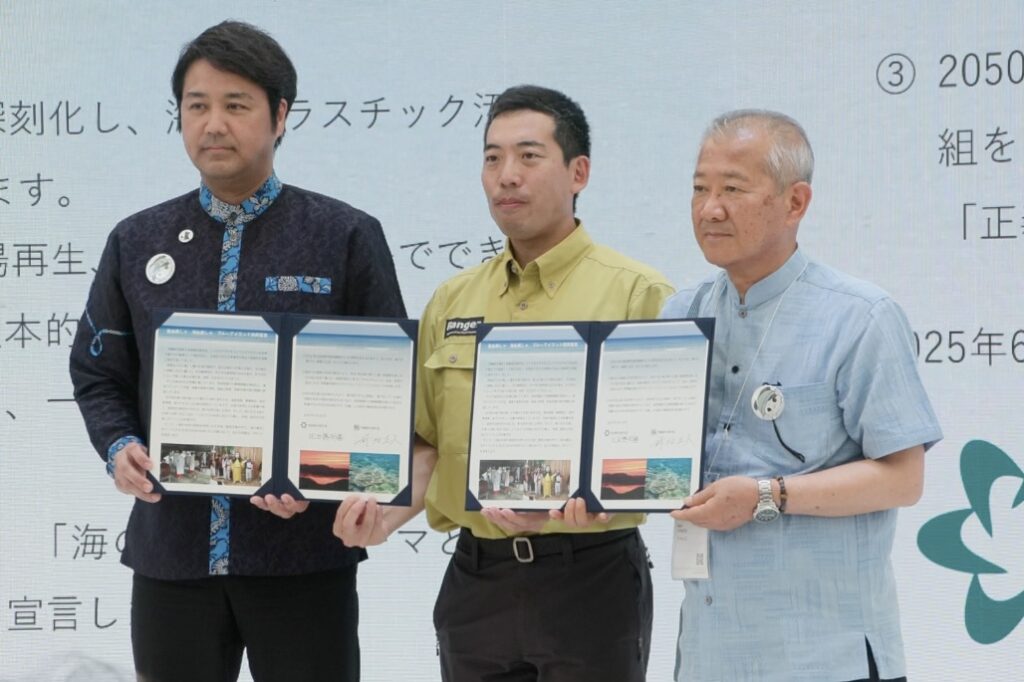
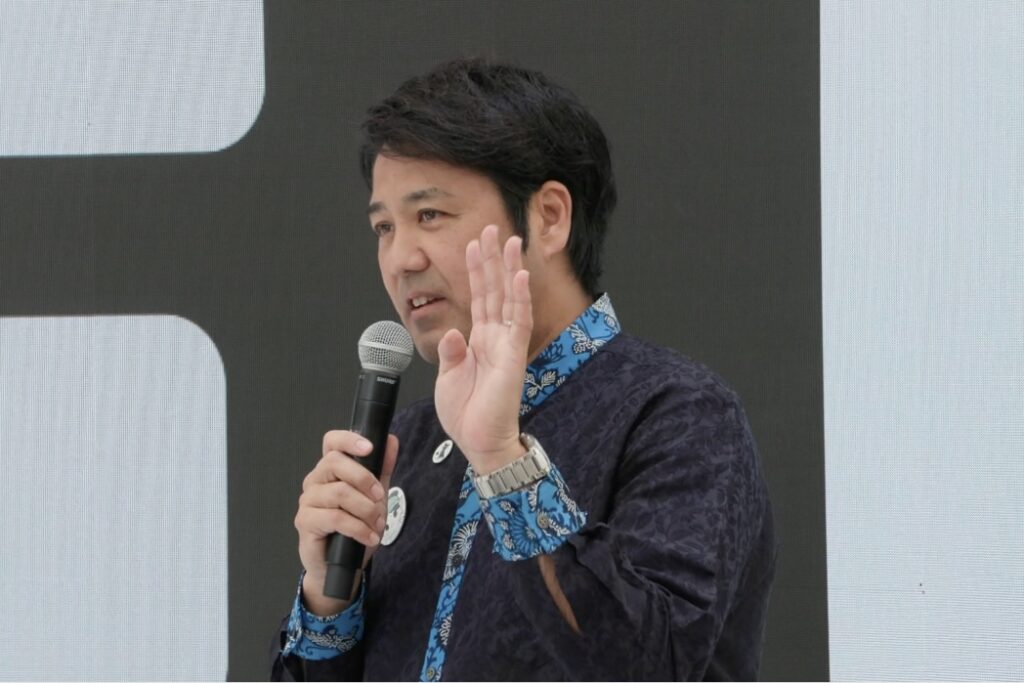
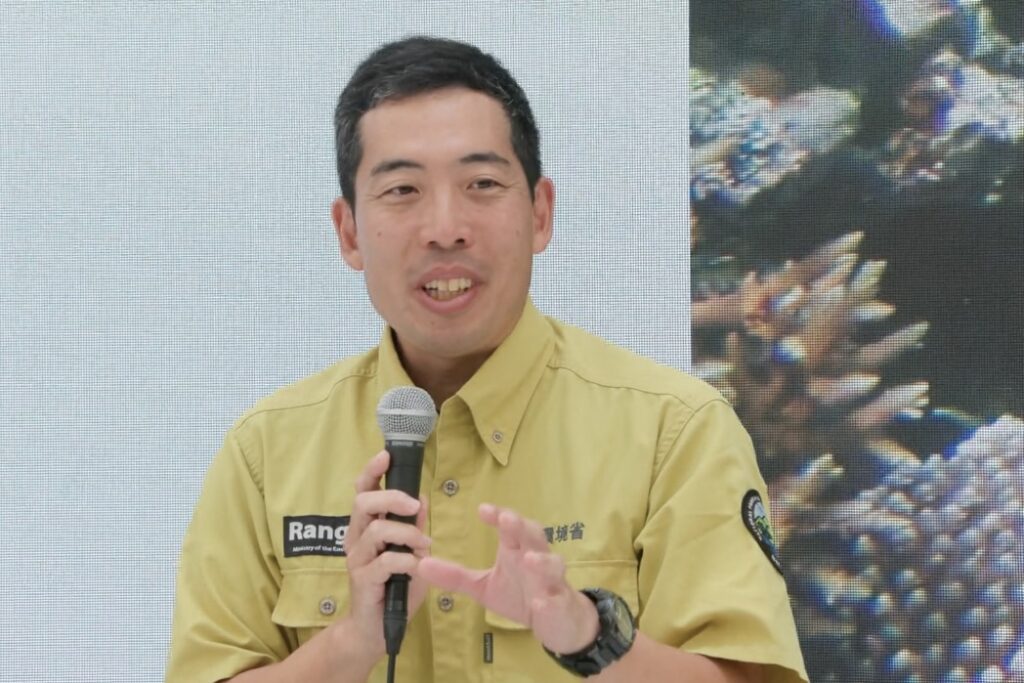
The closing session, moderated by Gen Yoshino, Representative Director of MIT, will feature the aspirations of Tsushima residents, who strive daily to achieve their goals, under the theme “Tsushima, the Bridge of East Asia: Wishing Together with the Islanders for a Future of the Ocean.” The talk session featured three speakers: Yukari Inutsuka, Managing Director of Marutoku Suisan Co., Ltd.; Momoko Saito, Representative Director of daidai General Incorporated Association; and Mr. Ueno, Representative Director of Tsushima CAPPA General Incorporated Association. They spoke about the struggles they feel as islanders regarding life on Tsushima and their connection to the sea, as well as the current situation and future of Tsushima. At the end of their talk, Mr. Yoshino concluded Tsushima Week by emphasizing that citizens will continue to work together vigorously to promote a society that coexists with the sea.
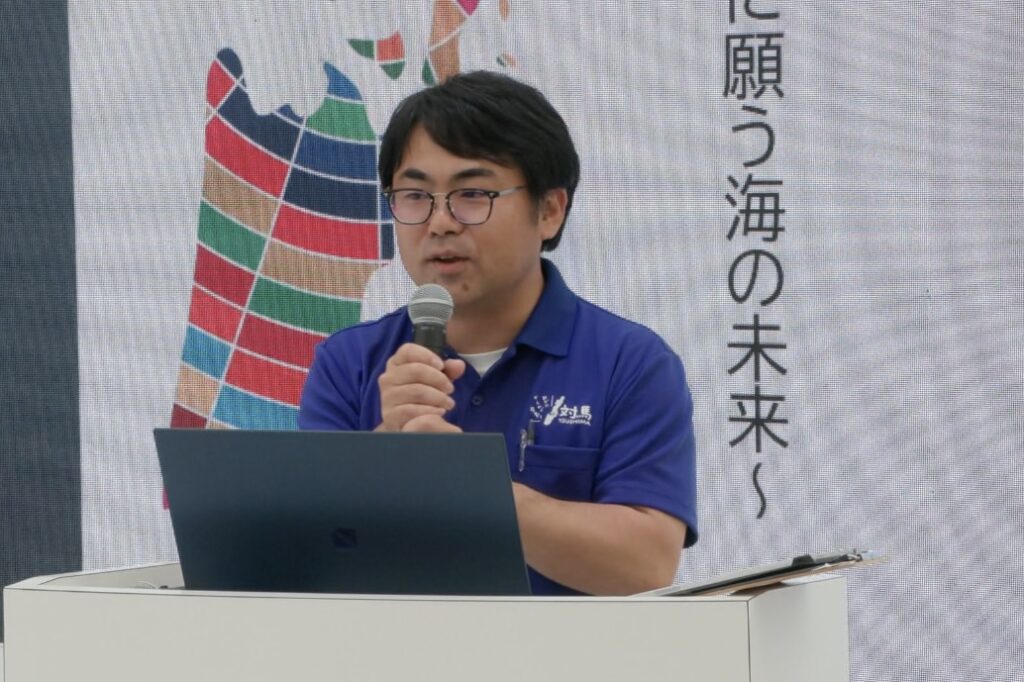
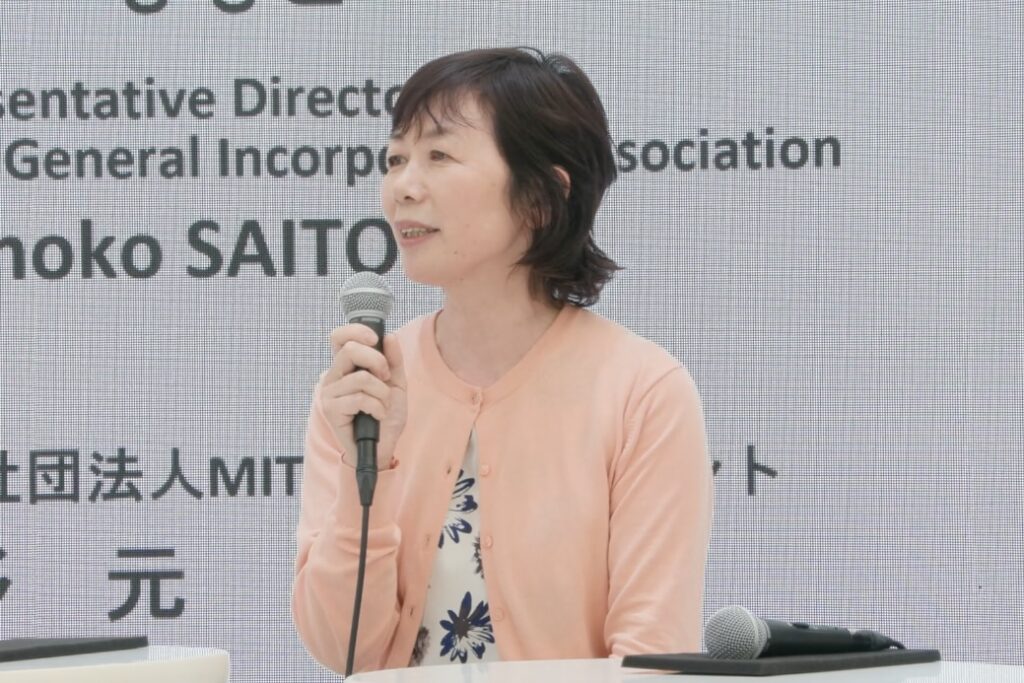
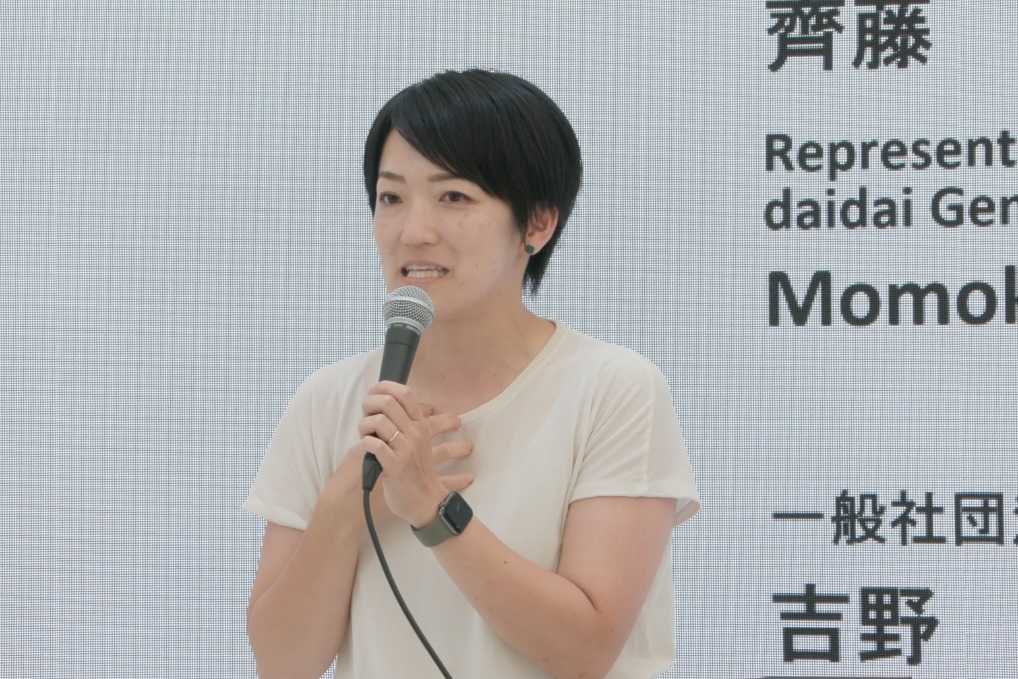
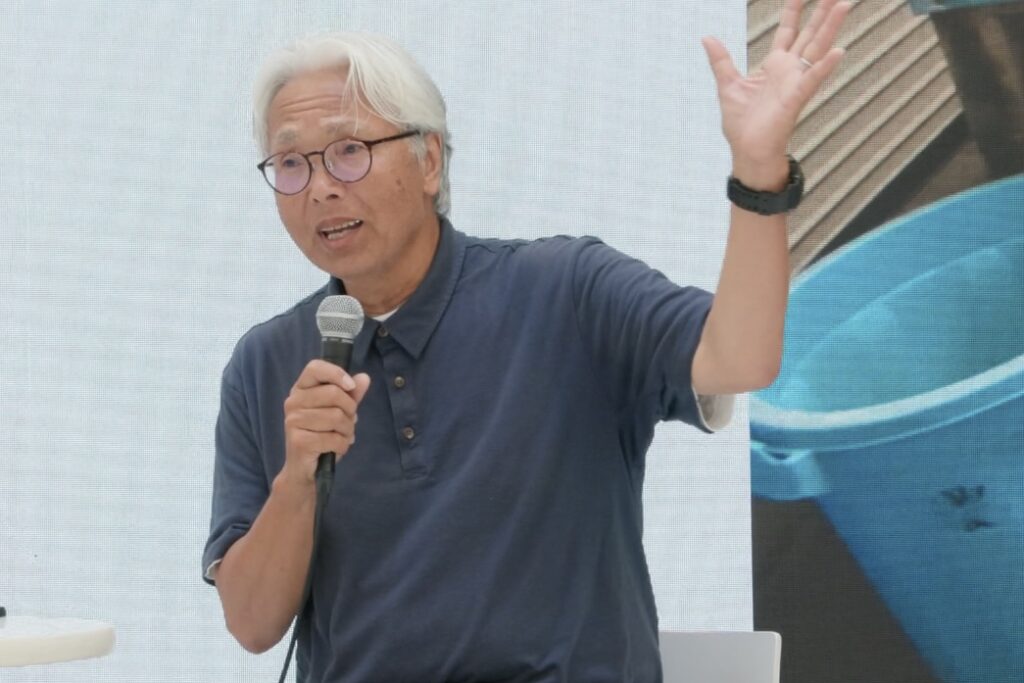
▼The event is available to watch on YouTube’s official BLUE OCEAN DOME channel. Please take a look.
【#058】 Japan-Korea Marine Environment Symposium (ZERI JAPAN / Tsushima City)
【#059】 Japan-US Marine Environment Symposium (ZERI JAPAN / Tsushima City)
【#060】Tsushima and Kansai Showcase the Future of a Circular Economy (ZERI JAPAN / Tsushima City)
【#061】African Waters’ Conservation Activities in Sete Kama, Gabon (ZERI JAPAN)
【#062】Corporate Initiatives Contributing to the Future of the Ocean (ZERI JAPAN / Tsushima City)
【#063】Resource Recycling and Waste Reduction with Suppliers (ZERI JAPAN / ASKUL Corporation)
【#064】Learning and Business Ideas at Tsushima Blue College (ZERI JAPAN / Tsushima City)
【#065】A Beautiful Ocean for the Future (ZERI JAPAN / Tsushima City)
【#066】Making Marine Plastic “Wave Ema” and Praying for the Future of the Ocean (ZERI JAPAN/Tsushima City)
【#067】Wishing for the Future of the Ocean Together with the Islanders (ZERI JAPAN/Tsushima City)
Screening of the Tsushima Week Keynote Video “A Beautiful and Bountiful Ocean for the Future” (ZERI JAPAN/Tsushima City)